5 Ways to Explore Istria Off the Beaten Path
March 12th, 2022 - There’s so much more to Istria beyond the famous Rovinj landscape or the olive oil and truffle fame. The region is full of treasures to discover, and we're happy to help you plan your visit with five unique ideas for things to do in Istria
And then go ahead and have those truffles anyway - we’d never think to suggest otherwise.
Walk the Parenzana trail
Not necessarily the whole thing, of course: running through three countries, the Parenzana trail is 123 kilometres long in total, and it's perfectly fine to only walk or cycle a part of it. Historically, Parenzana was known as the narrow-gauge railway which connected the Italian port city of Trieste with Poreč in Istria, passing through many inland villages and smaller towns along the way.
Fun fact: as the inauguration of the Parenzana line in Trieste was delayed several times due to various issues, the locals got skeptical after a while. When the first train ceremonially arrived in Trieste on April 1st, 1902, almost no one showed up at the railway station because people were convinced the announcement was an April Fools’ joke.
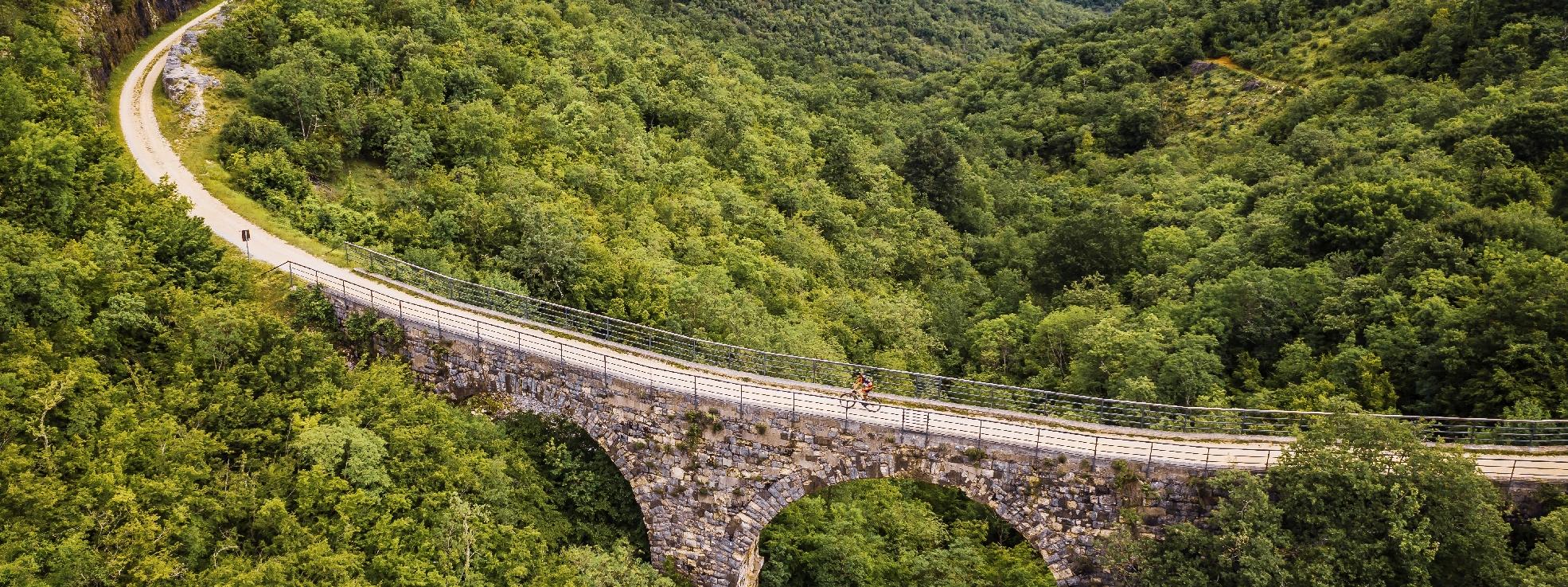 Parenzana trail / parenzana.net
Parenzana trail / parenzana.net
But it wasn’t, and the railway soon made it possible for agricultural produce to be distributed all over the region, stimulating Istria’s economic progress and becoming somewhat of a lifeline for the local population. Although the railway line ceased operation in 1935, it certainly left a mark on the region, and so it was decided to revive the route as a hiking and cycling trail.
Parenzana will take you over bridges and viaducts, now secured by guard rails; it runs through well-lit tunnels and snakes through the lush landscape. The entire trail is well-marked and is split into shorter routes - a comprehensive guide is available on parenzana.net, in several languages.
Ride the zipline over the Pazin abyss
Although Pula is the biggest town in Istria, the county’s administrative seat is actually Pazin, a town located in the very centre of the region.
Pazin boasts a medieval castle that was once a residence of Istrian margraves and hasn’t lost any of its grandeur with time. Perched on top of a tall cliff plummeting into the Pazin abyss, the castle dominates the majestic landscape which inspired literary giants of the likes of Dante Alighieri and Jules Verne.
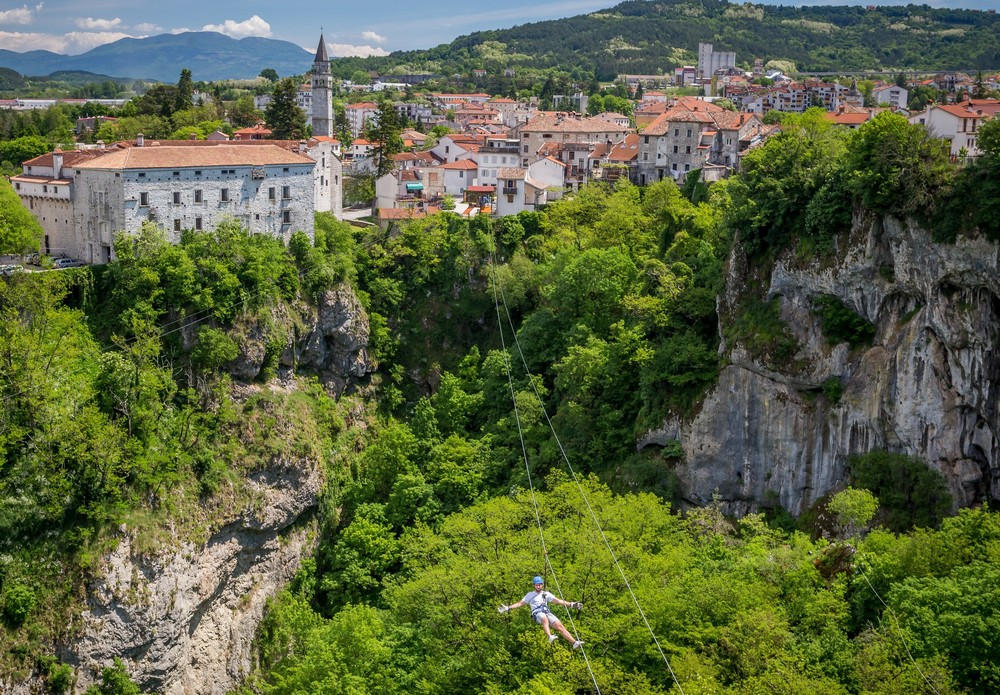 Pazin / Central Istria Tourist Board, photo by Julien Duval
Pazin / Central Istria Tourist Board, photo by Julien Duval
And what better way to take in the impressive sights than flying over the natural attraction? The Pazin zipline runs over the abyss in two stages: the first cable is 220m long and the second 280m, giving adrenaline lovers plenty of time to admire the historic landscape, as well as the karst phenomenon down below.
The zipline operates regularly from May 1st, but can be visited in the off-season as well upon request, provided you’re visiting with a group - contact info is available on their Facebook page.
Hike the contraband trails of Učka mountain
Have you ever had a chance to retrace the steps of smugglers of the past? A few years ago, three unique hiking trails were established on the Učka mountain, the natural border between Kvarner and Istria, introducing hikers to the history of contraband activity in the area.
 Učka mountain © Mario Romulić
Učka mountain © Mario Romulić
In the 1930s, a duty-free zone was established on the coastline around Rijeka to stimulate tourism and the local economy. Overnight, consumer goods became much cheaper, and the struggling population soon started to smuggle products such as sugar and petroleum out of the duty-free zone and over the Učka mountain on foot. They sold the goods for profit in the rest of the region as a way to survive in times of scarcity - check out this TCN feature for the full story.
You can find detailed information about the hiking routes in a dedicated mobile app, along with a list of accommodation providers and restaurants in the area. It’s available to download on GooglePlay and AppStore - search for 'Kontraband thematic trails'.
Discover the history of mining in Raša
Istria has a long history of coal mining, specifically in the area around Labin town located off the eastern coast of the peninsula. Arguably the most unique place in the mining landscape is Raša, known as Istria's youngest town which was purposefully built in the 1930s to house miners and their families.
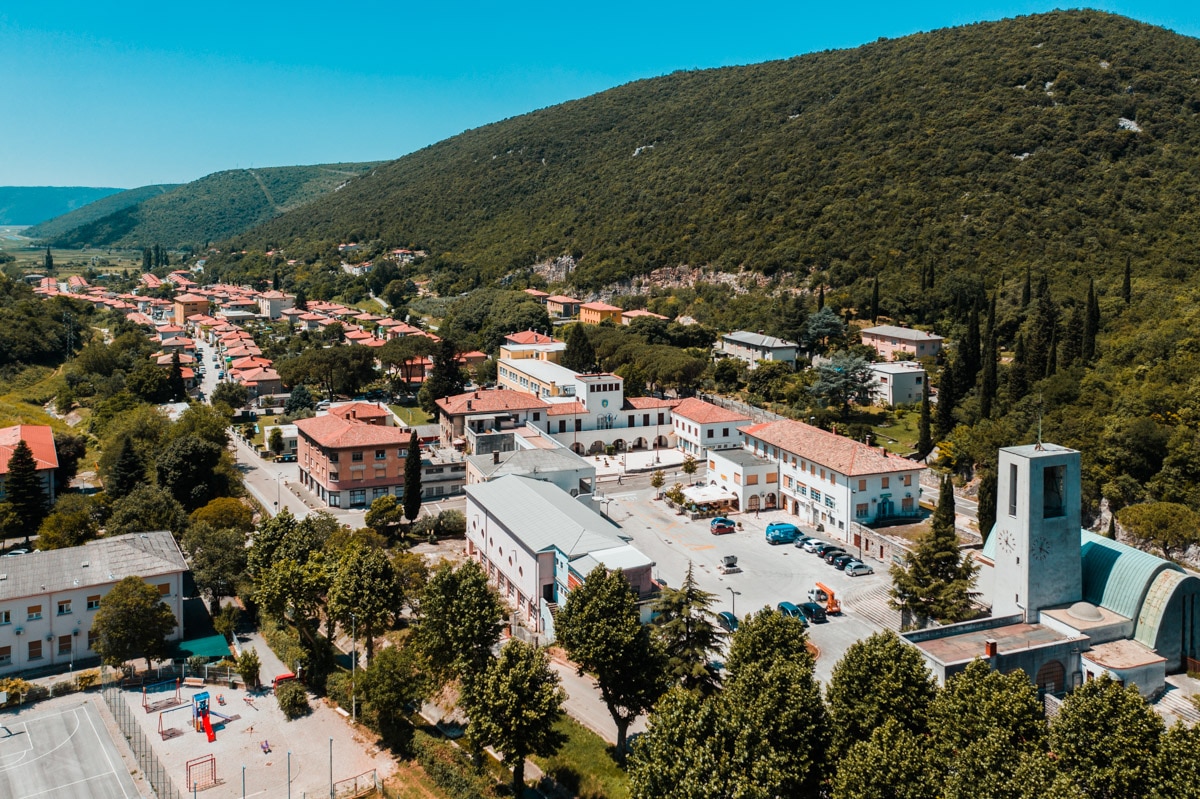 Raša town / Raša Tourist Board
Raša town / Raša Tourist Board
Two pairs of streets lined with former miners’ houses meet at the central square in Raša, crowned with a church built in the shape of an overturned mining cart and dedicated to the patron saint of miners, St Barbara.
Even though the mines closed a long time ago, you can experience what it was like to spend your days in the dark underworld. Located on the main square in Raša, the Miners House Arsia tells the story of Istrian miners and provides insight into their lives both above and below ground.
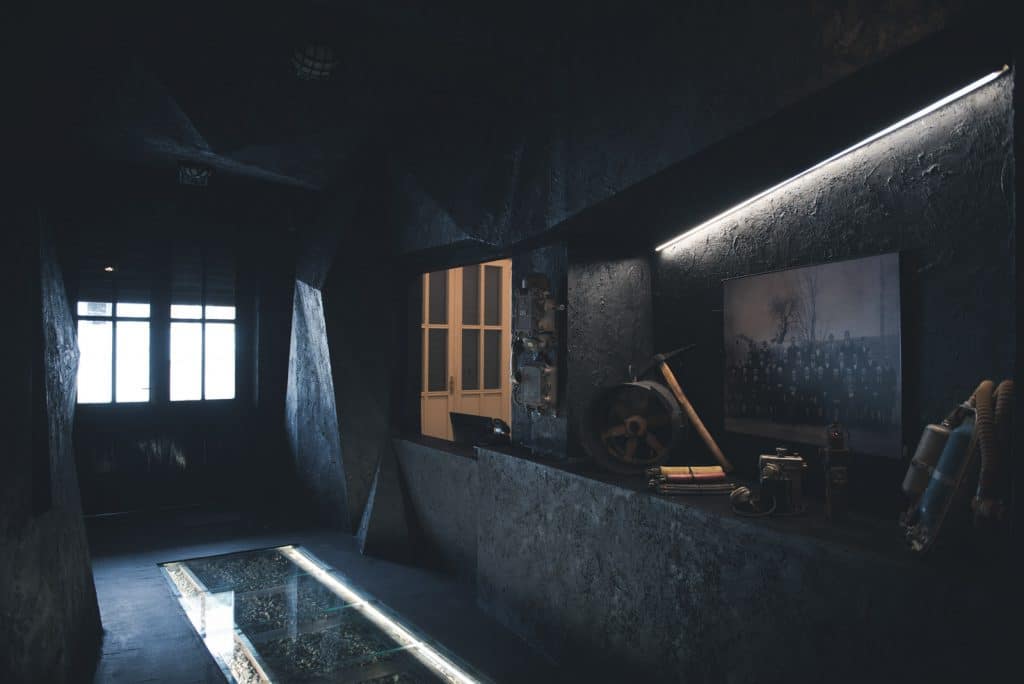 Miners' House Arsia / Raša Tourist Board
Miners' House Arsia / Raša Tourist Board
Starting from the entrance built like a mining shaft, the museum evokes the atmosphere of a mine - you can walk on the original railroad tracks surrounded by the sounds of coal digging and distant explosions, watch archival films to learn the stories of real miners who once inhabited the town, but also step into their homes thanks to a perfect recreation of a typical miner’s apartment.
Learn more about the Miners’ House over at the Raša Tourist Board.
Visit Croatia’s oldest lighthouse in Savudrija
The Adriatic coast is dotted with numerous historic lighthouses, most of them built in the 19th century. The one in Savudrija, the northwestern tip of Istria, boasts two champion titles: it’s the oldest active lighthouse in Croatia, and the world’s first lighthouse powered by coal gas.
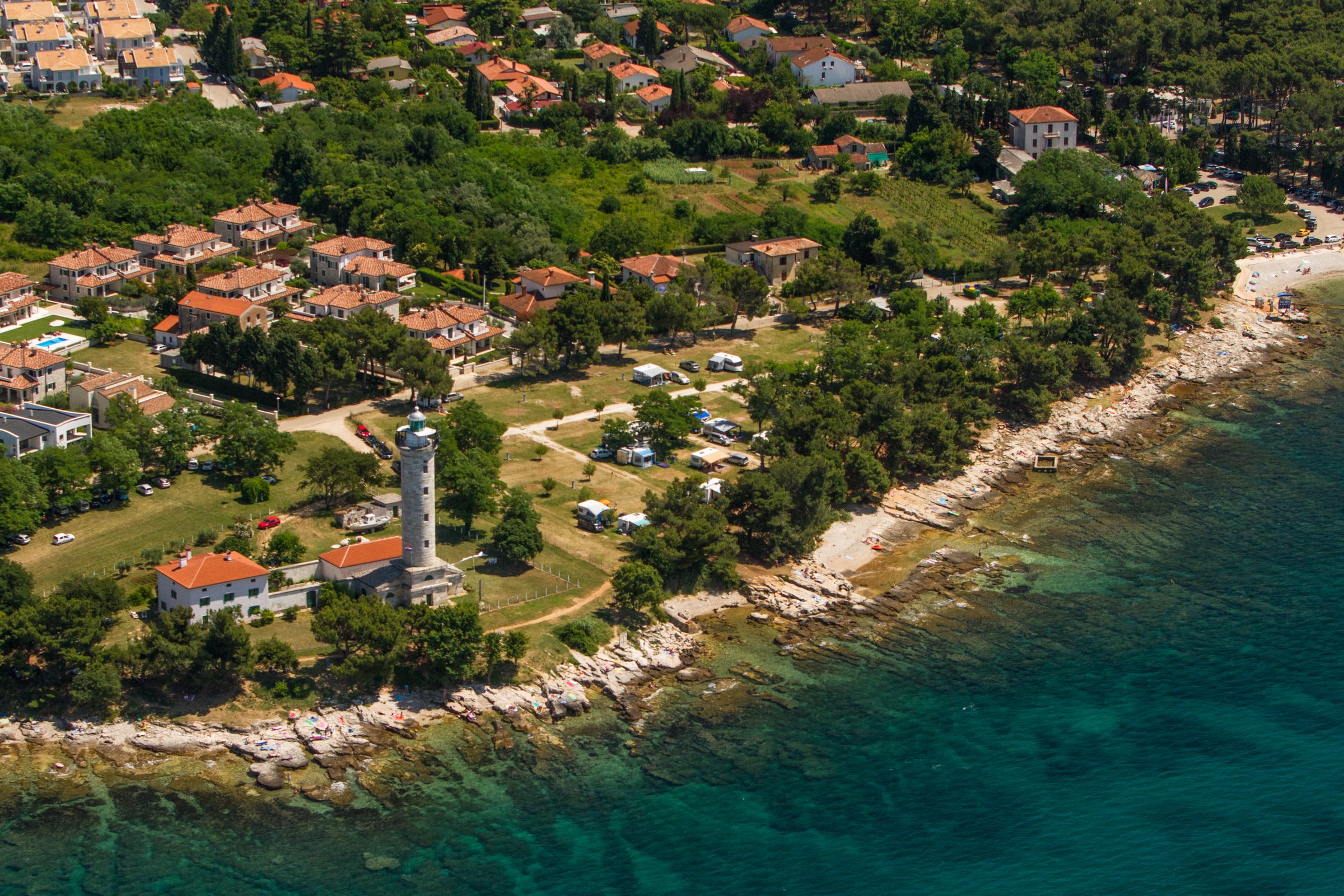 Savudrija lighthouse © Mario Romulić
Savudrija lighthouse © Mario Romulić
The lighthouse was built of white Istrian stone and powered by coal shipped in from the Labin mines. It was inaugurated in 1818 and became a local sensation overnight: people were so fascinated by the new structure, the lighthouse keepers were soon granted a licence to bear arms and were instructed to shoot any enthusiasts who attempted to scale the building and climb to the top.
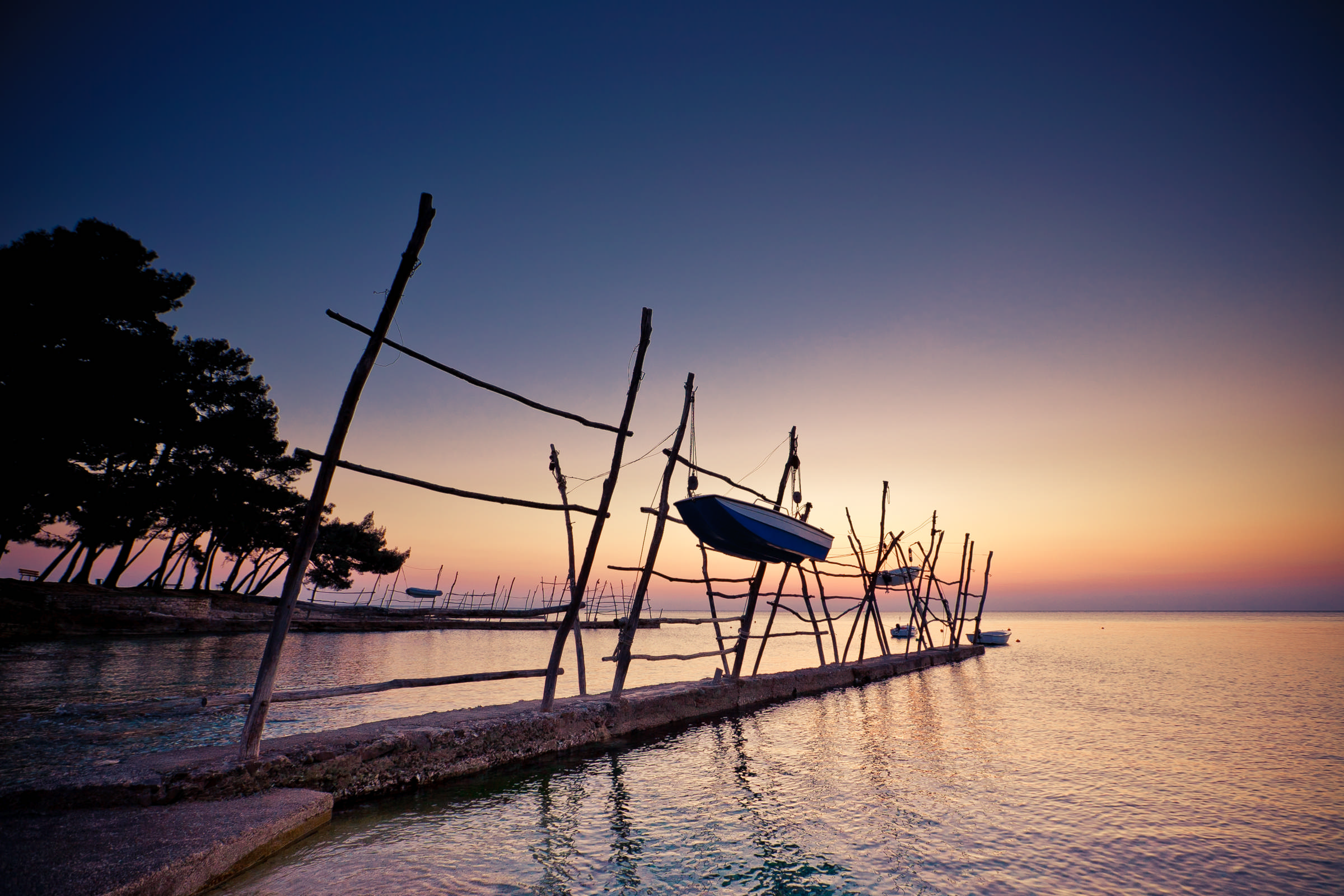 Savudrija © Mario Romulić
Savudrija © Mario Romulić
Nowadays fully automated and monitored by a single keeper, the lighthouse isn’t that much of a novelty anymore, but is still a beautiful landmark and in itself a good enough reason to visit Savudrija. Let it also be known that the place boasts a pretty spectacular coastline, lined with pines and traditional fishermen's boats. The waters around Cape Savudrija are favoured by surfers and divers alike.
PHOTOS: Beautiful Locations of Active Šibenik's Sports and Recreation
September 22, 2021 – From cycling and kayaking to hiking and an epic zip line, see the fantastic natural landscape that holds active Šibenik's thrilling offer.
When temperatures ease off, the Croatian coast welcomes a whole different type of guest. Spring, Autumn and Winter is the favourite time for sports enthusiasts and fitness fans to visit. And, few places on the Mediterranean have an offer complete like active Šibenik.
Outside of the peak season, the stunning nature that surrounds Šibenik is free from the bustle of visitors. Cyclists and runners speed by unobstructed. Maybe they'll pass a couple of hikers enjoying the same trails and spectacular views?
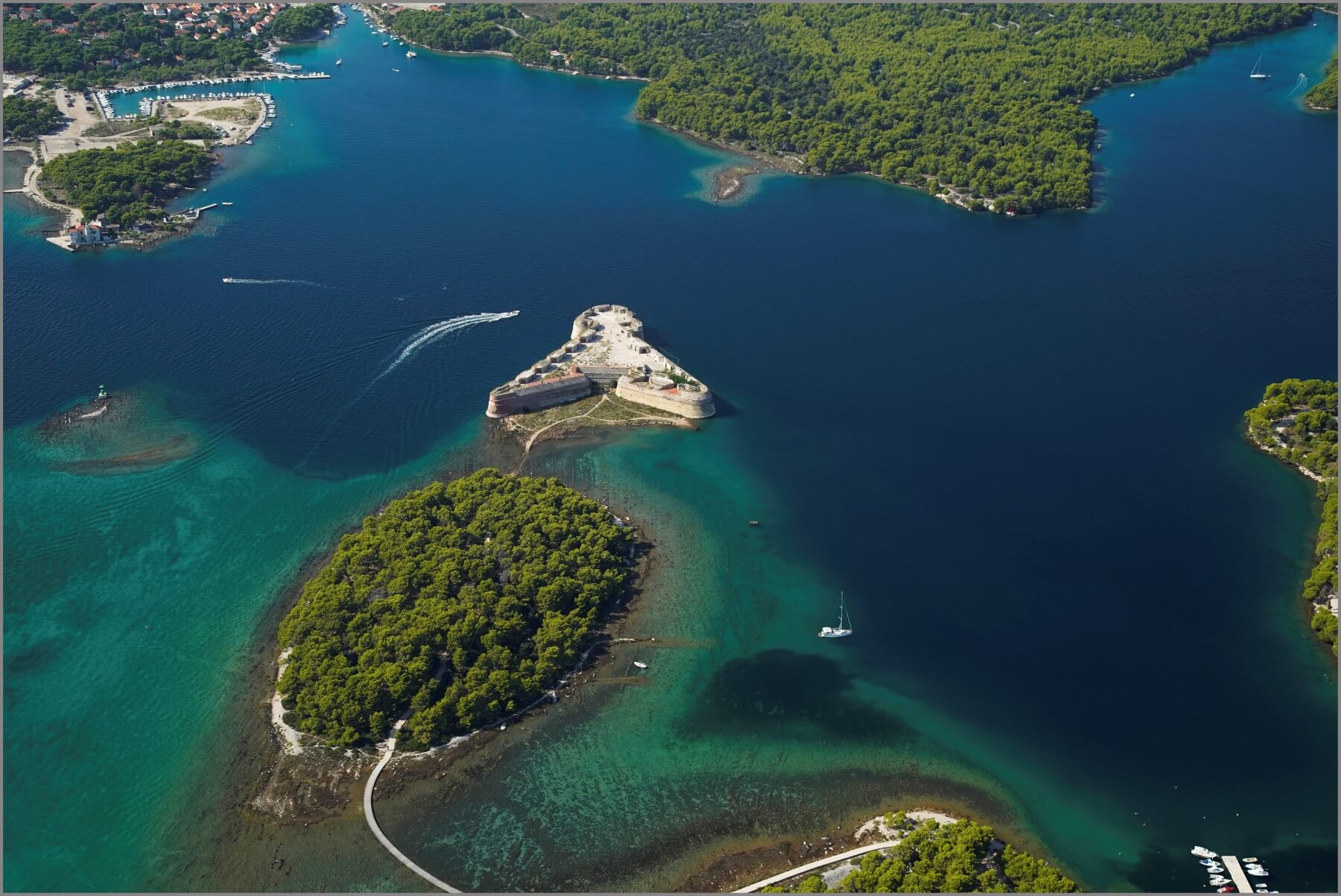 St Anthony's channel, St Nicholas Fortress and the cycle and walking path that reaches it via an island © Šibenik Tourist Board
St Anthony's channel, St Nicholas Fortress and the cycle and walking path that reaches it via an island © Šibenik Tourist Board
In the evenings, during their rest time, active Šibenik's guests have the city's best hotels, restaurants and charming Old Town almost to themselves. They share the cafe, bar and restaurant terraces only with Šibenik residents, relaxing once more now the city is returned to them.
Key to Šibenik's year-round appeal for fitness and sport fans is the city's unique landscape. No place in Croatia has natural assets like Šibenik. It is surrounded on all sides by a remarkable and startlingly varied topography.
Firstly, between Šibenik city harbour and the open Adriatic is a long waterway – St. Anthony's Channel. It is bordered on either side by two huge stretches of wild nature. Then, at the rear of the town, elevated up from sea level and next to Barone Fortress, the area of Šubićevac. Here, the entrance to the vast Šubićevac Forest Park, much of it an untamed, natural landscape. Thirdly, the vast Krka National Park, which lies just 10 kilometres north-east of Šibenik
Active Šibenik: St Anthony's Channel
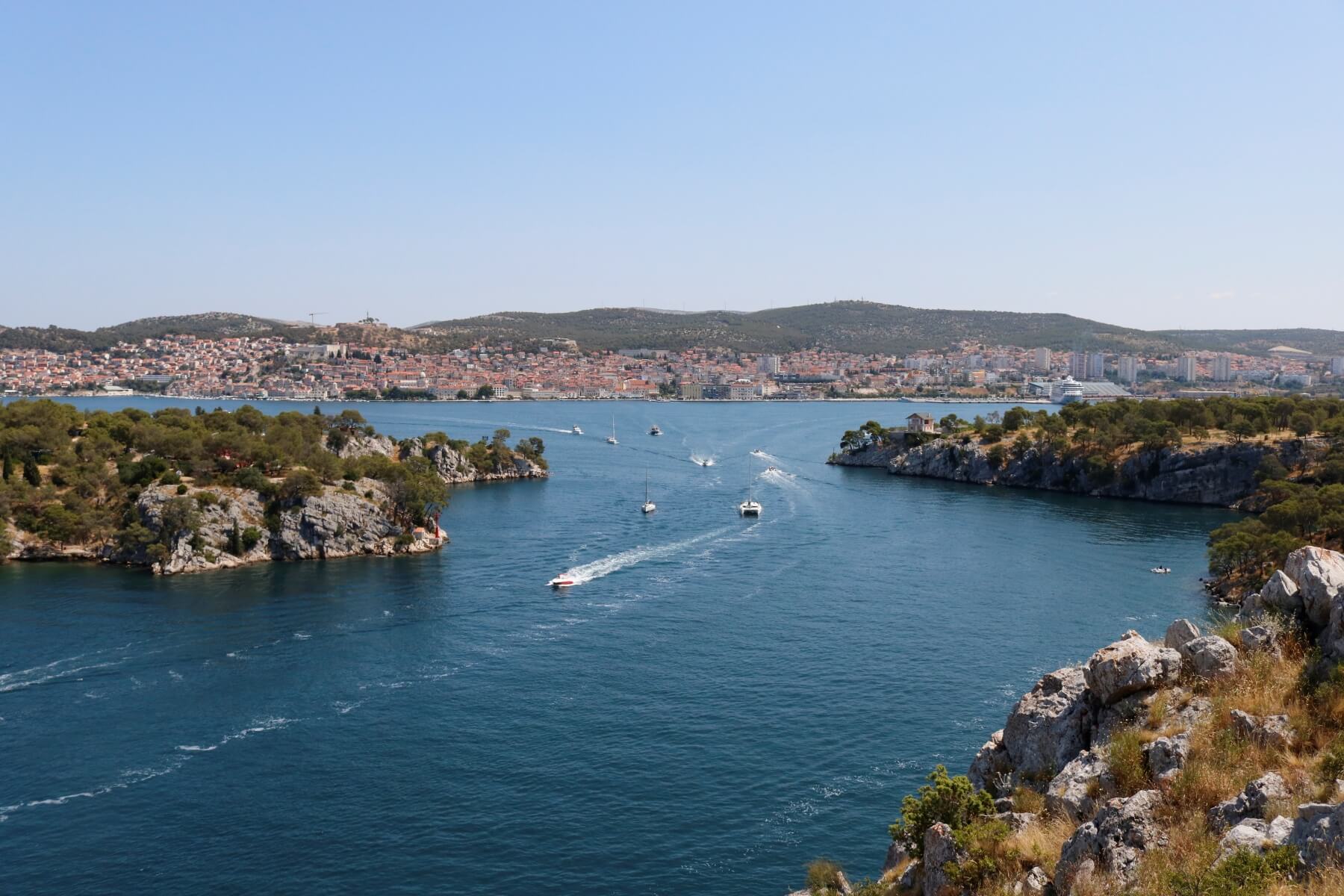
An epic 2000 metre long waterway, St Anthony's Channel is both a gateway to the open sea and the entrance to the city for anyone sailing into Šibenik. It is 140 – 220 metres wide and is bordered on each side by near untouched Dalmatian nature. On one side, sheer cliffs for one wall of the channel. At the top, dense pine forests, walking, hiking and cycling trails. Also, the famous recreation site of Martinska.
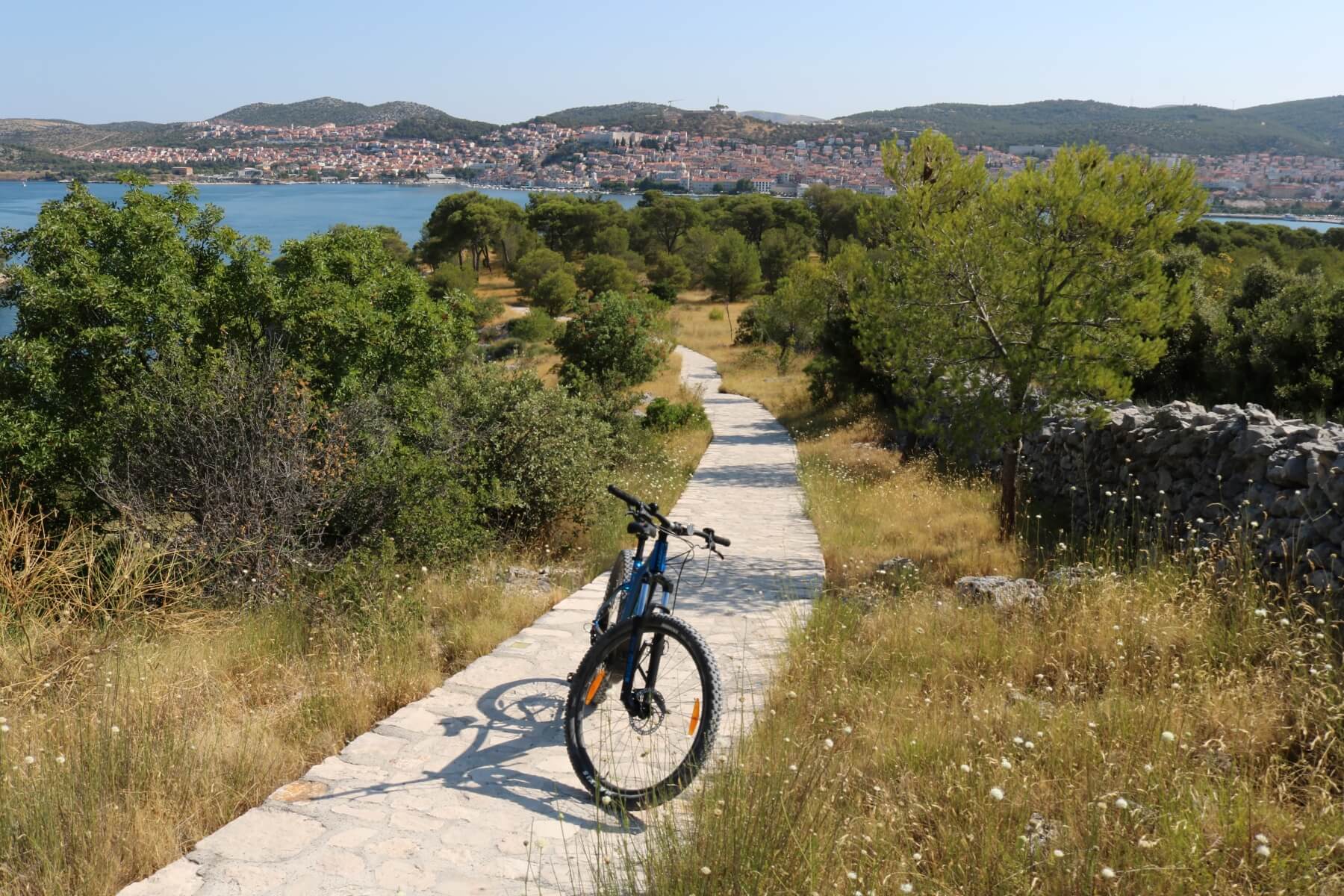
On the opposite side of the channel, a very different layout of the land. Here, the pines are much lower and closer to the channel. Between the two, idyllic beaches - the best in Šibenik – line a pathway designated for running, walking and cycling. Those on bicycles drop down from small hills on the interior. After following the path at the side of the water, their ultimate reward is the spectacular St Nicholas' Fortress. On both sides of St Anthony's Channel you'll see incredible views of Šibenik, its harbour and the side opposite.
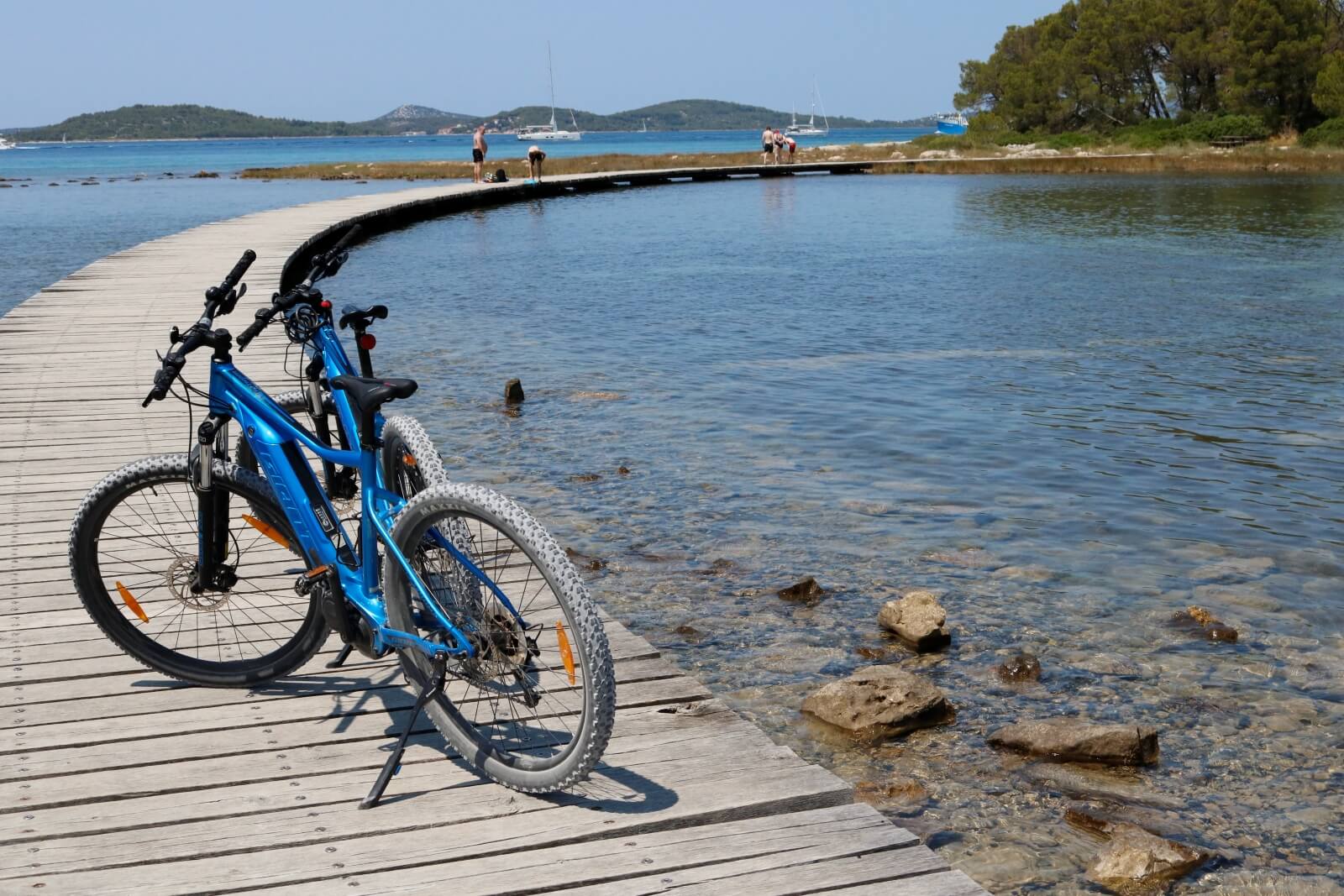
For those who prefer recreation on the water, St Anthony's Channel is perfect to explore by kayak. It's also one of the easiest ways to discover all of Šibenik's best beaches. Sticking close to the pine-sheltered coast, beautiful sailboats pass you in the centre of the channel, on their way to or from the city.
Active Šibenik: Šubićevac Forest Park
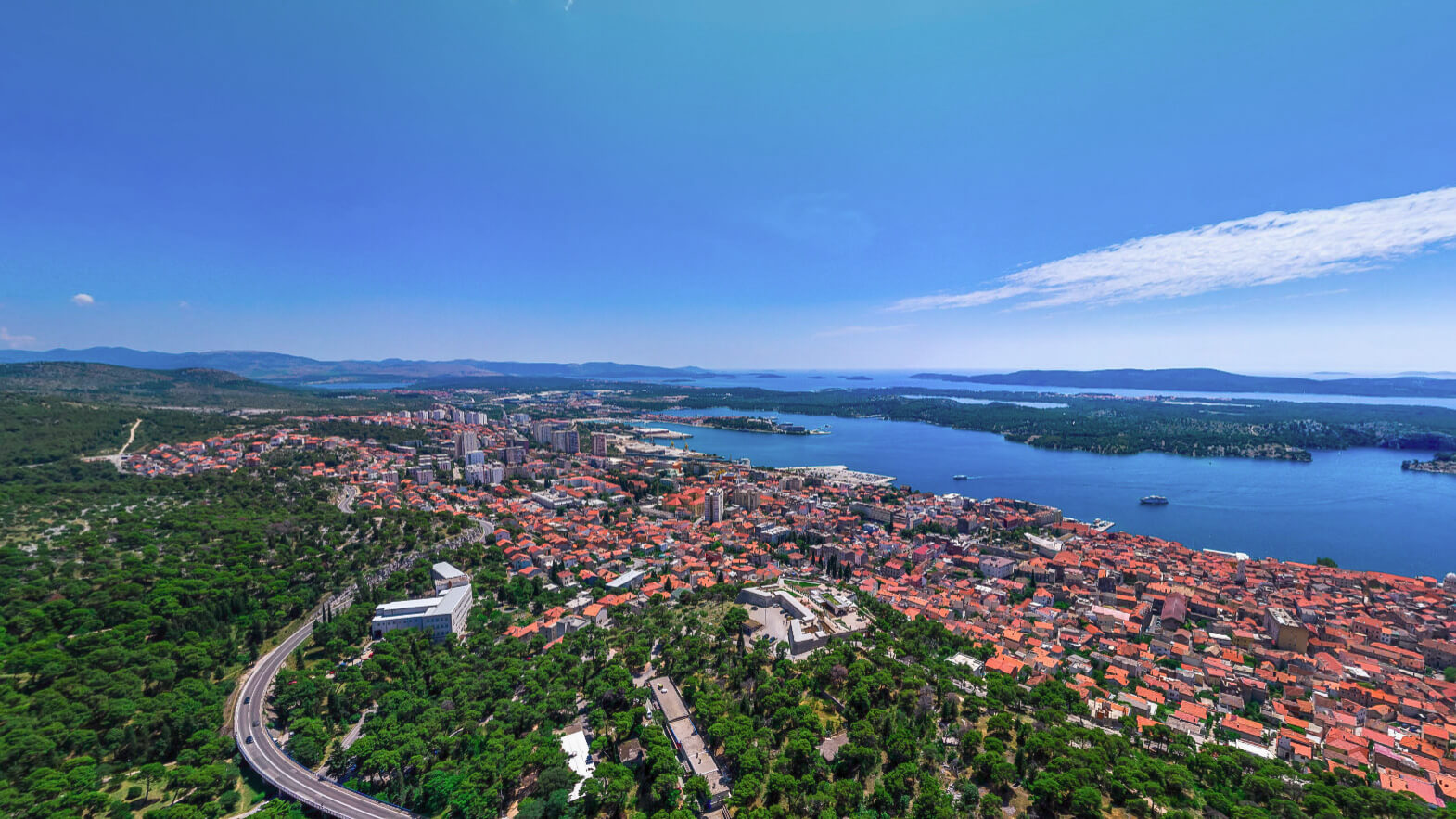 View over Šibenik, with Šubićevac Forest Park at the rear of the city © Šibenik Tourist Board
View over Šibenik, with Šubićevac Forest Park at the rear of the city © Šibenik Tourist Board
To visitors, Šubićevac Forest Park is the least famous of all Šibenik's recreational areas. A huge stretch of forestland, much loved by city residents, it rises above the city near Barone Fortress. The section of forest closest to the Šubićevac is designated as a city park. Within this part, you'll find a children's playground, specially designed to be accessible to all, including children with special needs.
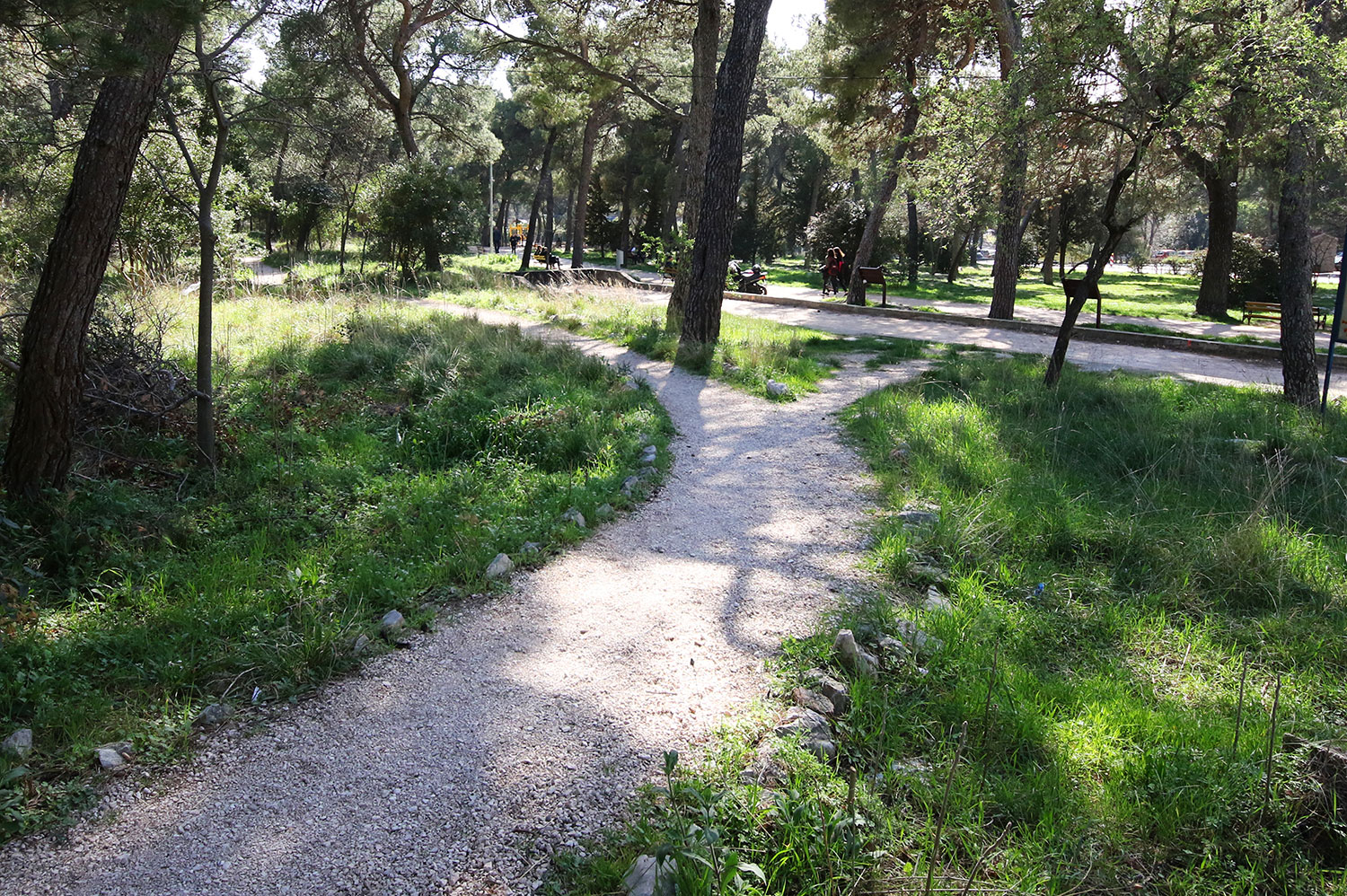 Easily accessible section of Šubićevac Forest Park © Javna ustanova Športski objekti Šibenik
Easily accessible section of Šubićevac Forest Park © Javna ustanova Športski objekti Šibenik
Throughout this section, designated paths for cycling and walking. Running to the southeast, a much larger area of near untouched forest. Here, a wilderness ripe for runners or hikers to explore. It's worth seeking out the tiny Church of St Michael here.
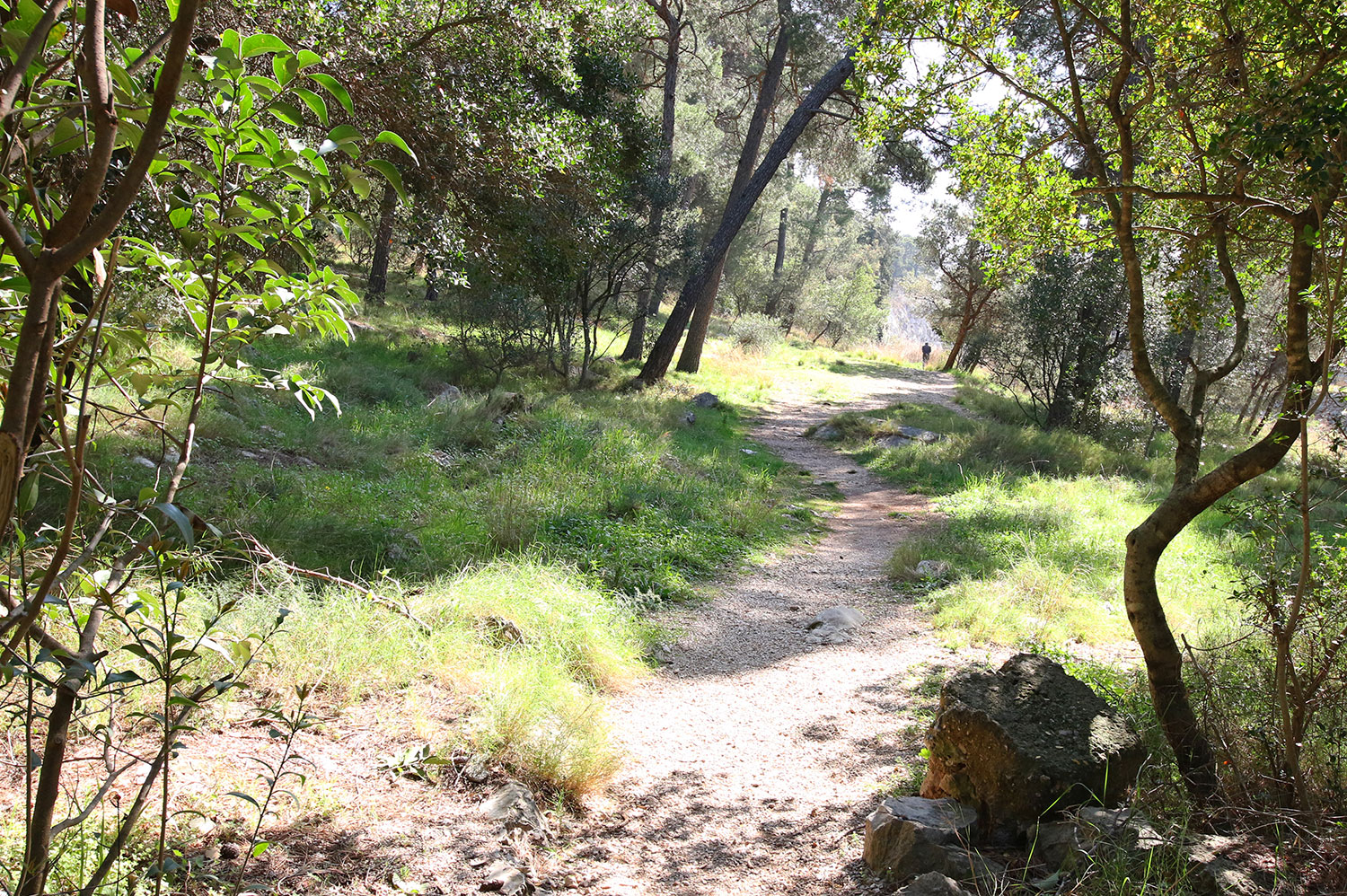 Paths through forest wilderness © Javna ustanova Športski objekti Šibenik
Paths through forest wilderness © Javna ustanova Športski objekti Šibenik
Residents say the very best views of Šibenik come from Šubićevac Forest Park. Certainly, they are breathtaking.
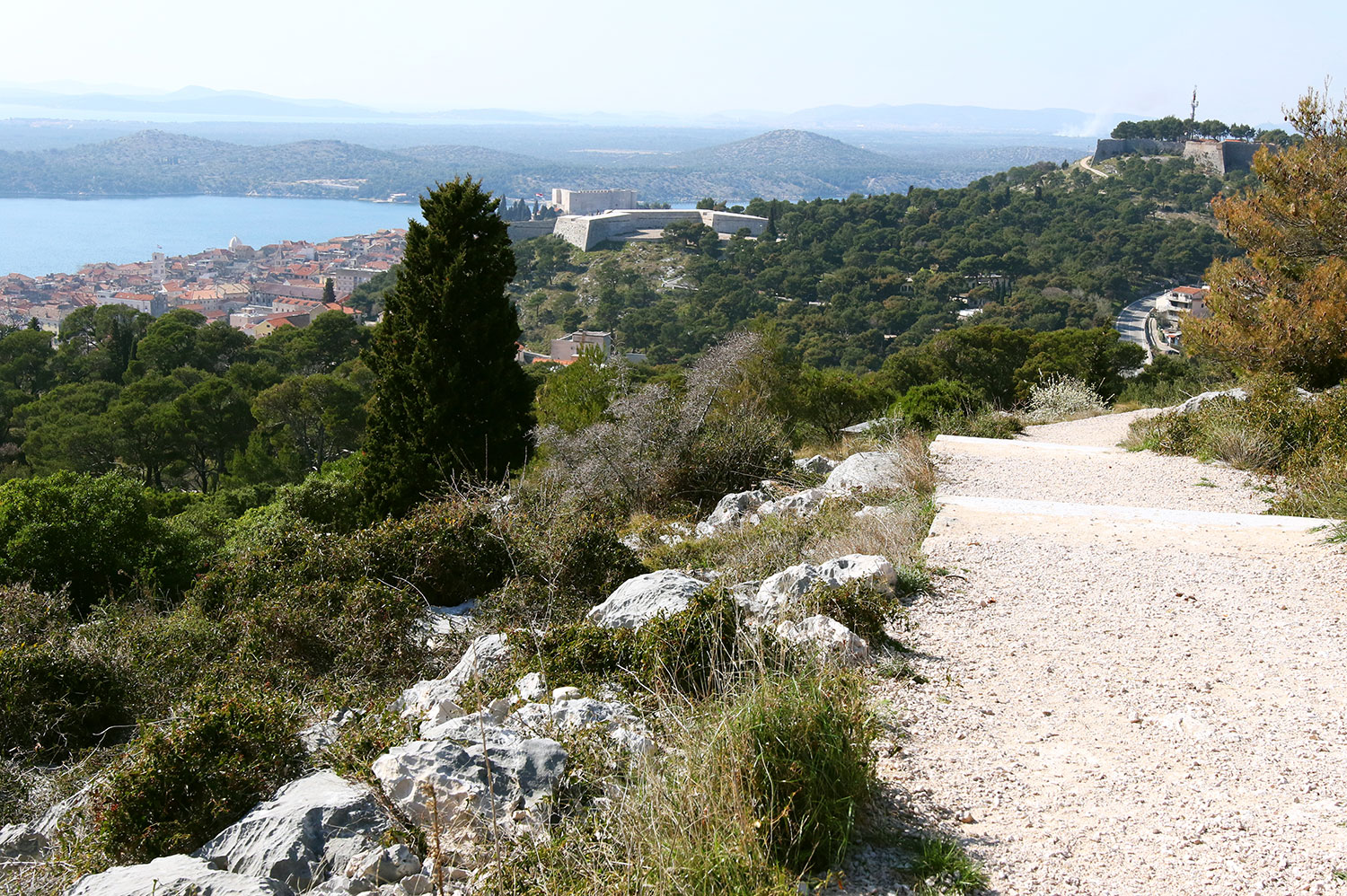 The best views over the city? It's a tough one to call - Šibenik has many contenders © Javna ustanova Športski objekti Šibenik
The best views over the city? It's a tough one to call - Šibenik has many contenders © Javna ustanova Športski objekti Šibenik
Active Šibenik: Krka National Park
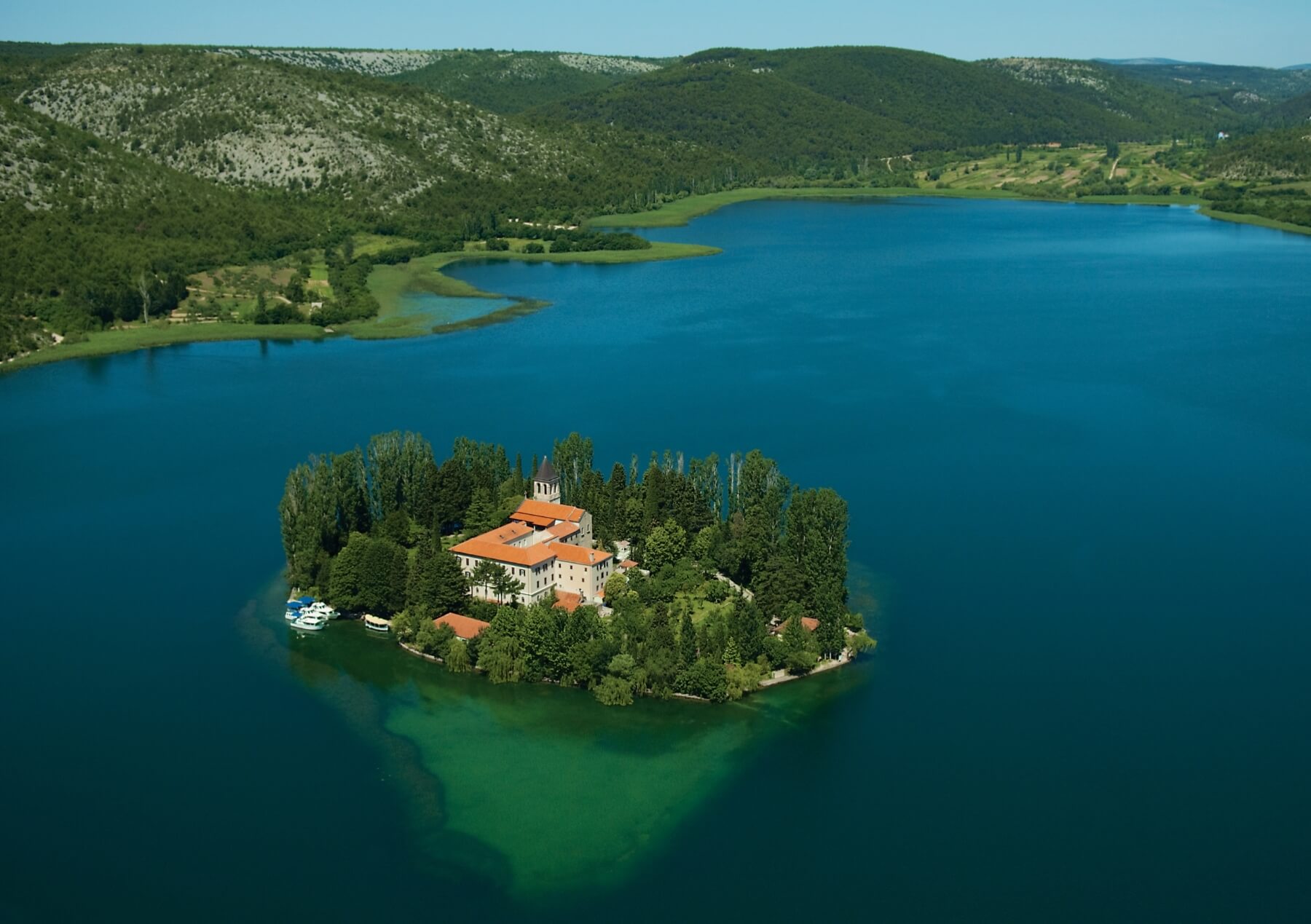 Island in Krka National Park © Šibenik Tourist Board
Island in Krka National Park © Šibenik Tourist Board
A series of wide pools, fed by cascading waterfalls, Krka is one of Croatia’s best known and most spectacular National Parks. Famous water features like the unforgettable Skradinski Buk dominate the park's postcard images. You'll find it near the park's most southerly entrance, very close to Šibenik. But, beyond this eye-catching introduction lies a further 109 square kilometers of spectacular National Park to discover. The best way to experience it is by walking, hiking or cycling.
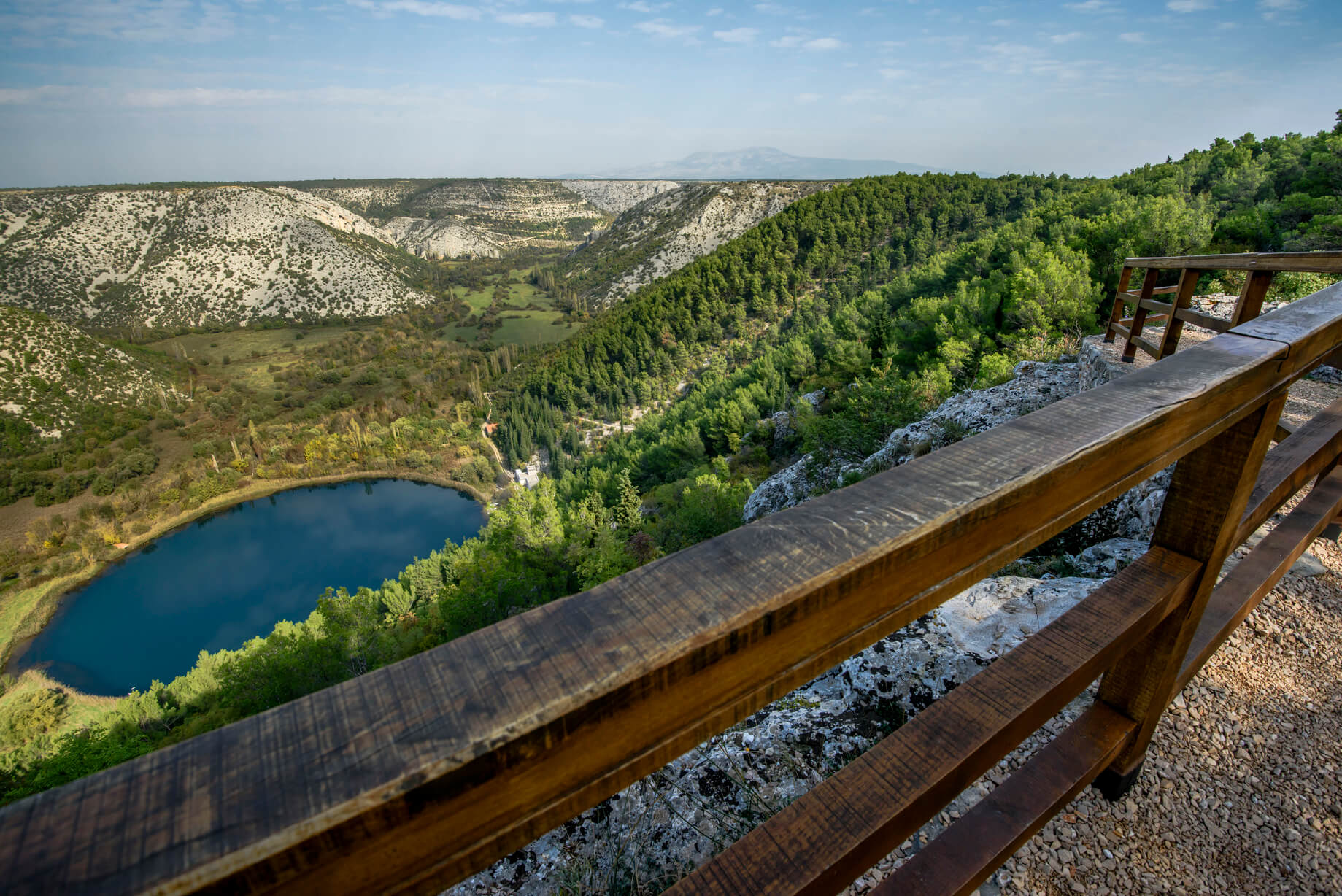 Countless captivating viewpoints © Krka National Park
Countless captivating viewpoints © Krka National Park
Hiking and walking trails of Krka National Park
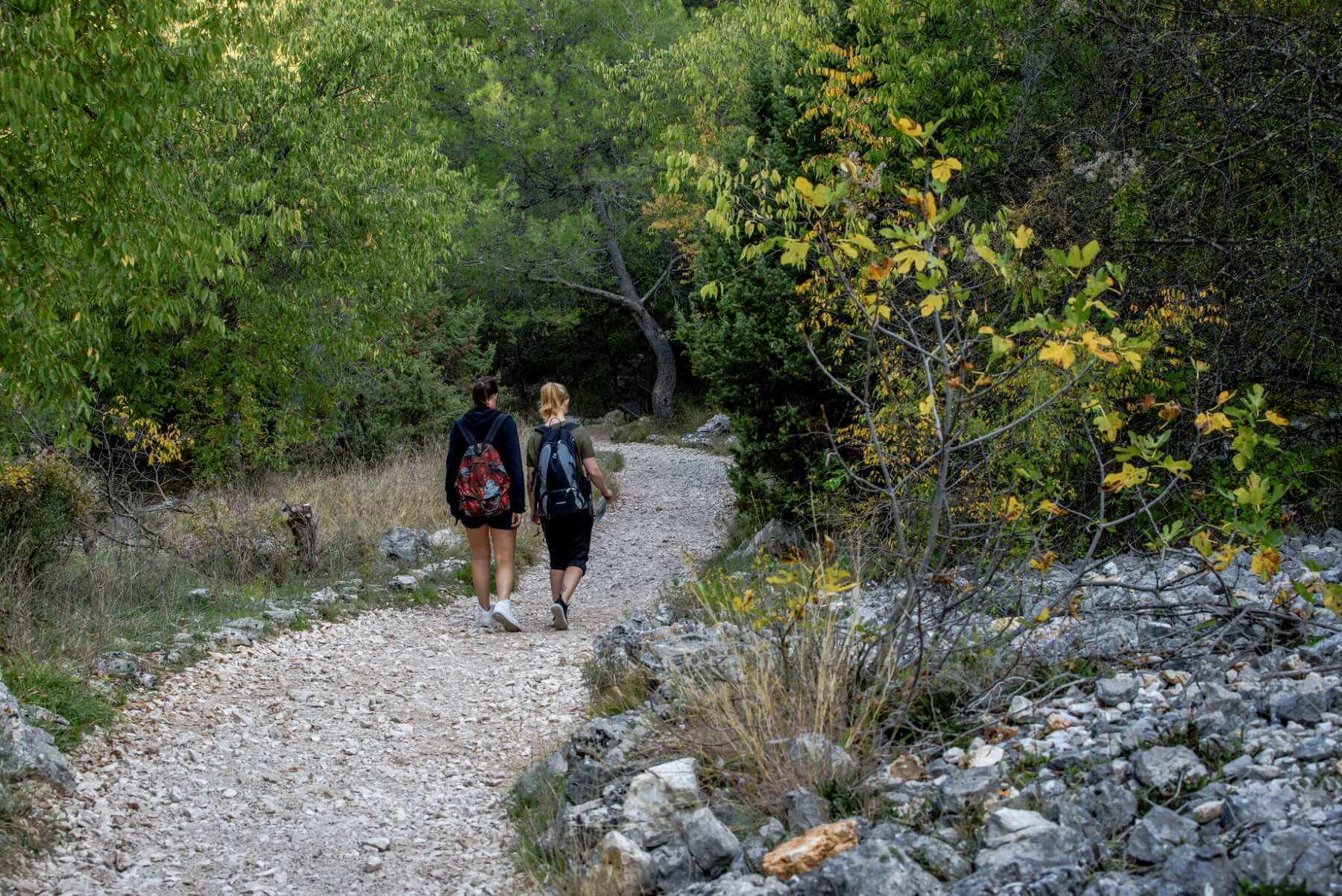 Walking and hiking trails © Krka National Park
Walking and hiking trails © Krka National Park
The park's hiking and walking trails give you the most thrilling views of this epic landscape and its wealth of flora and fauna. At the side of the trails, educational panels detailing the plants and animals you pass.
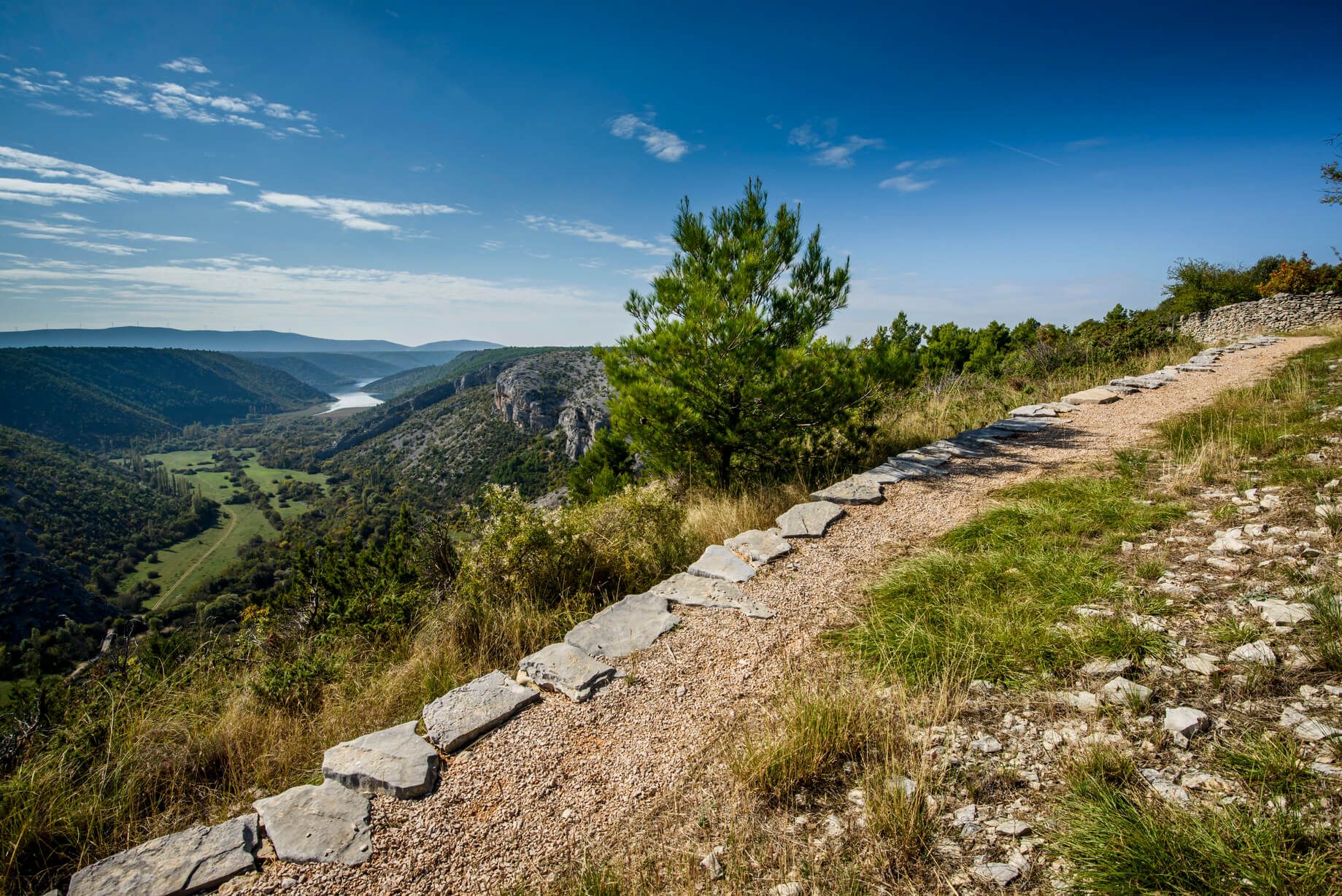 Epic landscape © Krka National Park
Epic landscape © Krka National Park
There are three circular trails: Skradinski buk (1900 m), Roški Slap (1360 m) and Krka Monastery (2100 m). A walking/cycling trail also leads to Skradinski buk from the Skradin bridge (3400 m), while from Lozovac, it is possible to take a forest trail (875 m) down to the park's longest waterfall.
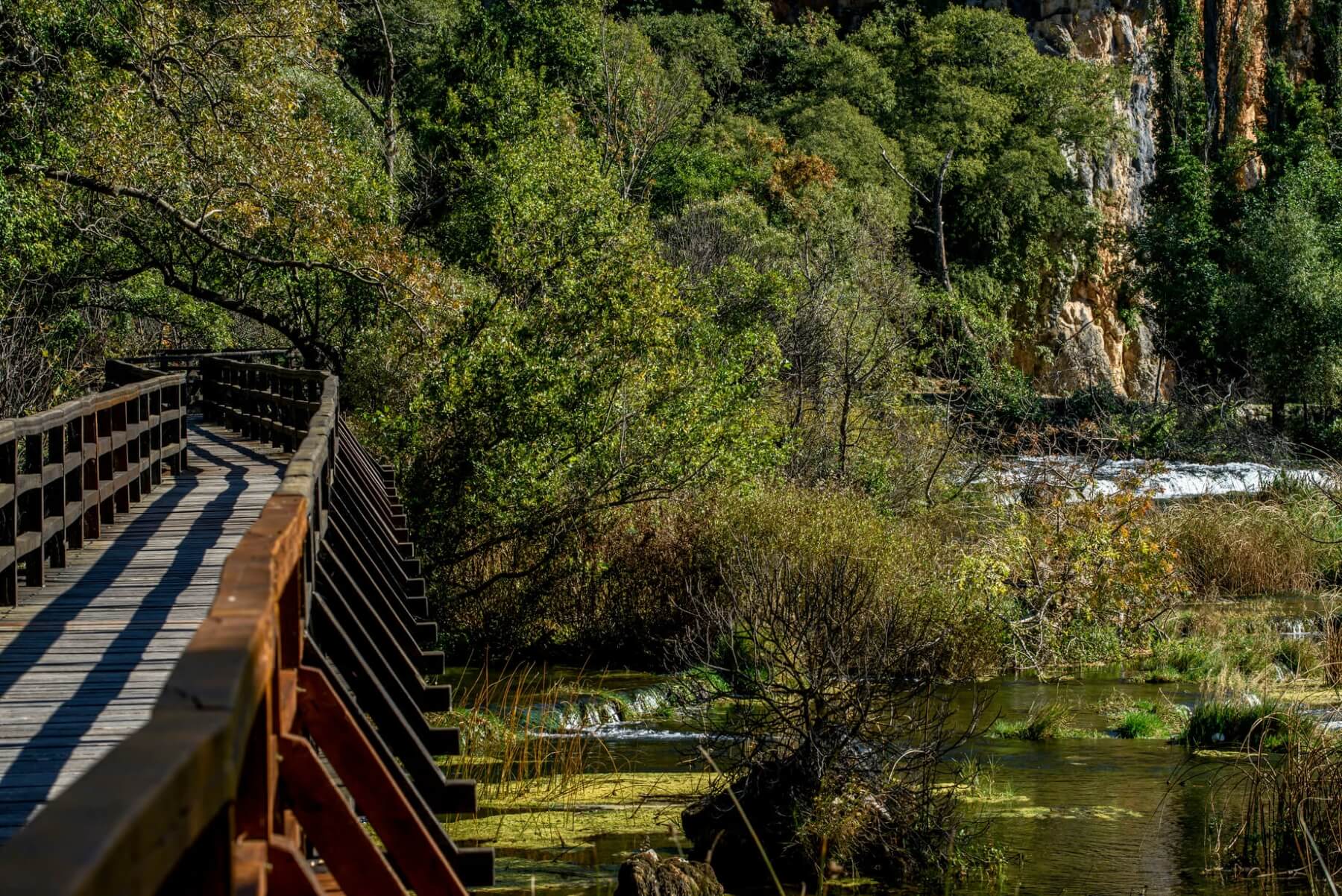 Walking over waterfalls © Krka National Park
Walking over waterfalls © Krka National Park
The shortest trail is 300 m long and leads to Bilušića buk, while the longest trail is Stinice-Roški slap-Oziđana pećina and covers 8.5 kilometres. In total, there are 7 spectacular waterfalls to find as the river Krka descends through the park.
Cycling routes of Krka National Park
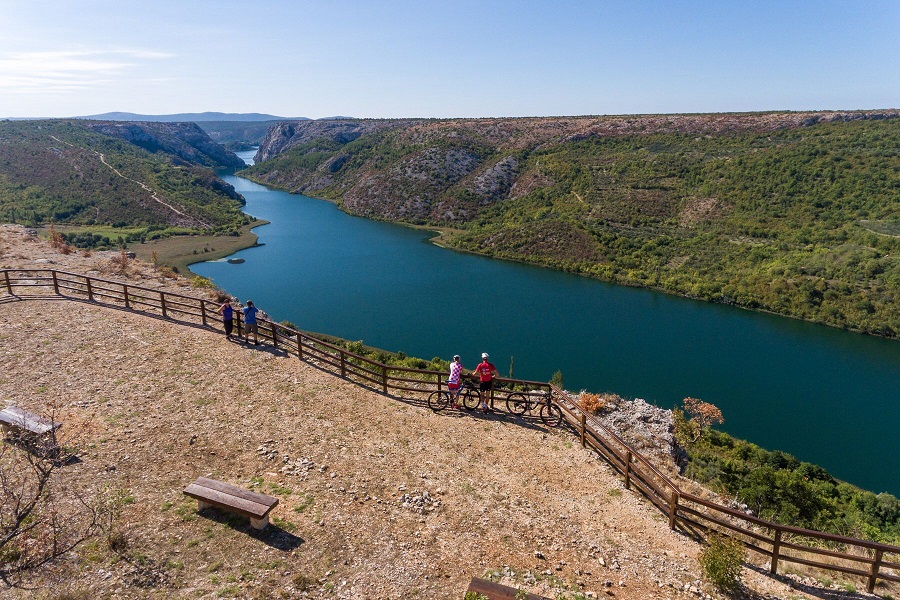 Breathtaking views on the cycling and walking routes © Krka National Park
Breathtaking views on the cycling and walking routes © Krka National Park
Bicycling through Krka National Park is a journey of endless enjoyment. If your perfect cycling route offers stunning landscapes, then this is the place for you. But, if you're curious to learn about the park's cultural and historical heritage, then cycling also helps you unlock these park secrets.
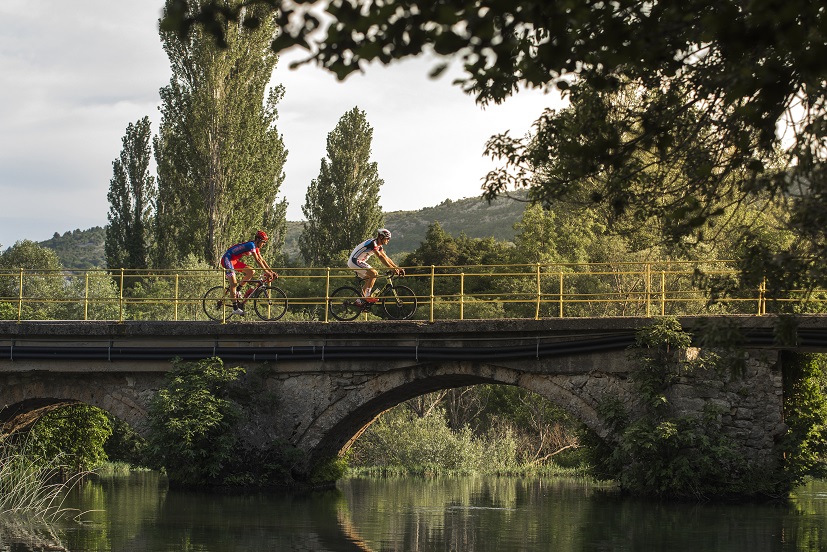 Cycling © Krka National Park
Cycling © Krka National Park
No less than fourteen cycling routes crisscross the park. They are divided into three types:
Road route - perfect for racing bikes and dedicated cyclists
Trekking & family route - a mixture of paved roads and gravel paths, perfect for city bikes, mountain bikes, families with children and cyclists of any age and ability.
Mountain biking route – a mixture of gravel paths and unarranged forest paths, with sharp ascents and descents, designed for mountain bike enthusiasts in good physical condition and with advanced cycling skills.
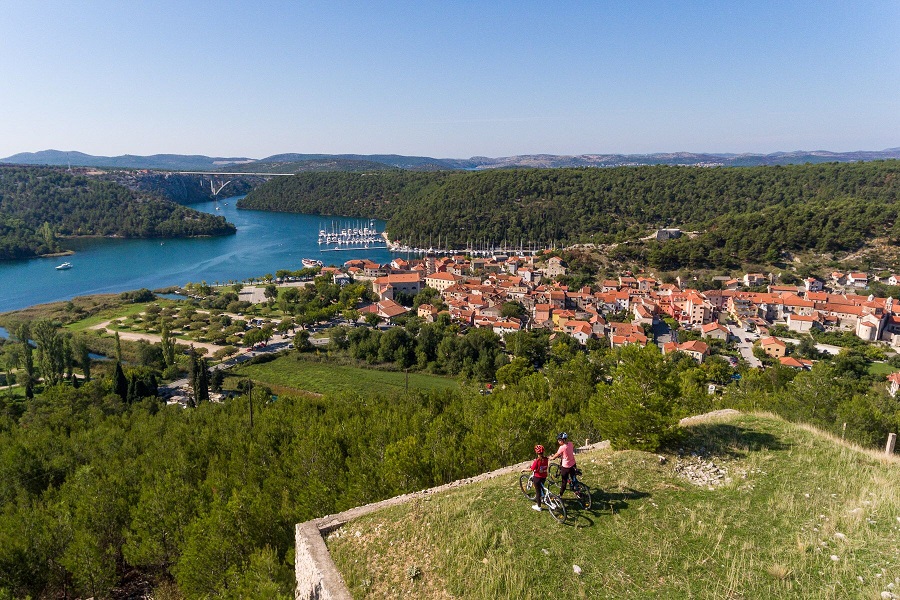 Cycling above Skradin © Krka National Park
Cycling above Skradin © Krka National Park
Šibenik zipline
On the northeast corner of the park, stretching across an epic canyon, one of Croatia's most thrilling ziplines. Flying from cliffs hundreds of metres above, so vast is the canyon that you can barely see the thrillseekers at the end of the first line. And, after that, there are still another two to go!
For more information and/or booking any of these activities, visit/contact Šibenik Tourist Board here
For more on great things to do in Šibenik, be sure to check Total Croatia News's dedicated pages here
Pelješac Interactive Map with Cycling and Hiking Routes Available
May 26, 2021 - As part of an effort to strengthen adventure tourism on the peninsula, a Pelješac interactive map is available with five circular mountain biking routes and six hiking routes.
As stated by turistickeprice.hr, tourist communities from Pelješac united at the end of last year to develop tourist products of Pelješac. Specifically, they approached the development of outdoor offers through hiking, cycling, and windsurfing, and five thematic festivals are planned in which visitors would enjoy the flavors of Pelješac, traditional dishes, and the well-known Pelješac wine.
As part of the development of the Outdoor Program, an interactive map of mountain cycling and hiking routes in Pelješac was made. There are currently five circular mountain cycling and six hiking routes on the map. Additional route extensions are planned, as well as the addition of catering facilities and wineries to the map so that guests can easily find their way around the area and get to know the complete offer of Pelješac. Pelješac is rich in wineries and traditional taverns and restaurants, so the combination of outdoors and traditional flavors is quite natural.
On the map, you can see information about the difficulty of the route, the type of surface, description, photos and you can download the GPX track that can be used in various mobile applications and smartwatches. There is also a link to the OsmAnd mobile app on the map, as a suggestion. Otherwise, the app is free to download and works offline.
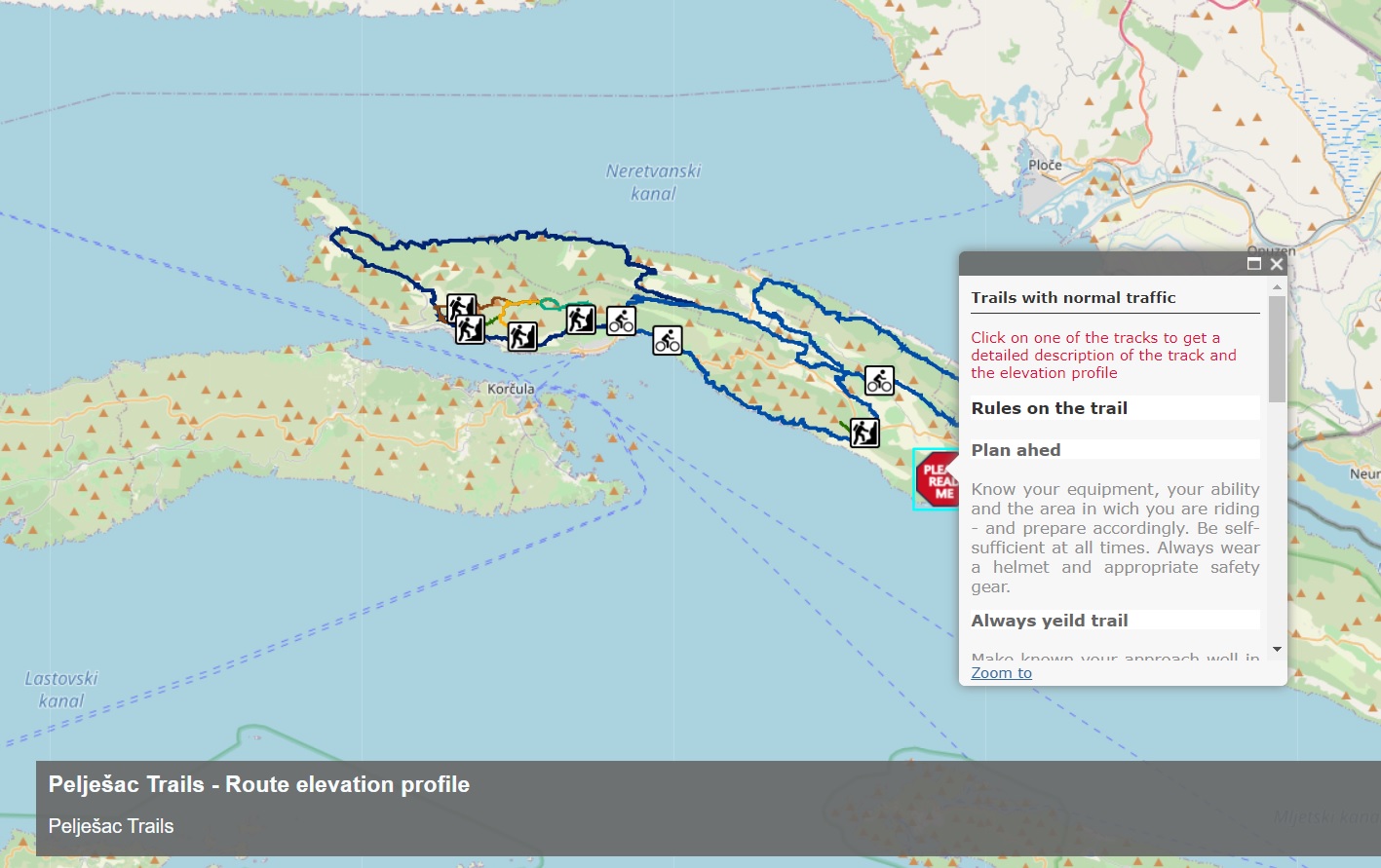
Pelješac Interactive Map with Cycling and Hiking Trails (Screenshot)
The map shows a total of five mountain bike circular routes with a length of 184 km and six hiking routes with a total length of 39 km. The Tourist Boards of Ston, Janjina, Trpanj, and Orebić note that they have developed an interactive map that cyclists and mountaineers can study without coming to the info center, or looking at the websites of tourist boards. In addition, the trails were made in collaboration with local cyclists who know the terrain best, and thus end-users will be able to discover the most interesting parts of Peljesac, which hides many natural beauties.
You can find the English version of the interactive map of Pelješac HERE, and the Croatian version HERE.
You can learn everything about what the Pelješac peninsula can offer you on your next trip, in Total Croatia’s Pelješac peninsula on a page, HERE. Total Croatia’s articles are now available in your language!
For more information about cycling in Croatia, go to Total Croatia's dedicated page.
For more on travel in Croatia, follow TCN's dedicated page.
New Istria300 Cycling Race to Bring 1,000 Professional and Recreational Cyclists to Istria
December 5, 2019 - With the start and finish line in Porec, a new cycling event titled Istria300 will launch in October next year, which will bring as many as 1,000 professional and recreational cyclists to Istria, announced the Valamar Diamant Hotel.
Glas Istre writes that the specialty, and therefore the uniqueness of this cycling event, is behind its motto ”Ride your limits". Specifically, participants will be able to choose their desired distance from the three offered during the ride. Istria300 will ride on trails of 155, 235, and 300 kilometers maximum.
In addition to the race, as part of the event, the Istria300 Expo will be held in Porec from October 8th to October 11th, offering visitors and participants a handful of innovations from the cycling industry. In addition to sports facilities, many interesting lectures by renowned cycling coaches and nutritionists from World Tour cycling teams will be organized.
This international cycling event is organized by Vladimir Miholjevic, former Croatian cyclist and Julius Rupitsch, organizer of the prestigious Großglockner Berglauf mountain race in Austria.
“We chose Istria because it offers ideal cycling conditions. The routes include beautiful places, excellent infrastructure, as well as facilities for cyclists. In addition, the destination itself is made up of its people, and the overall impression will provide participants an unforgettable cycling experience,” said race director Vladimir Miholjevic, adding that Istria is rich in natural beauty, and even these routes do not cover everything, which leaves room for new plans. He also points out that there are not many places in the world where 300 kilometers can be driven on closed roads.
The organizers have set themselves the highest standards in organizing cycling events, and their desire is for athletes and cycling to profit as much as possible.
The mayor of the host city, Loris Persuric, said that he believed that October next year would be a truly active month as another motive for arrivals was created, thus prolonging the tourist season.
The director of the Tourist Board of Porec, Nenad Velenik, agreed, adding that Porec certainly wants to become a base for different profiles of athletes and various sports, such as handball, football, and cycling.
Valamar Riviera and its Istrian destinations Porec and Rabac are actively involved in the development of cycling tourism.
“We believe that the main levers for the development of bike tourism are content creation and offers for cycling tourists. The terrain configuration in Istria, the excellent infrastructure and facilities of our hotels, adapted to active guests and professional athletes, are the basis for the development of a great cycling tourism offer. At Valamar Riviera, we strategically develop the destinations where we do business using our resources and their full potential to offer our guests exactly what they are looking for,” said Davor Brenko, Vice President of Sales and Marketing at Valamar Riviera, who supports this major project.
Brenko adds that the fully equipped bike center currently in Rabac is planned to open in Porec next year. Furthermore, the official partner of this event is the world-famous Israel Cycling Academy cycling team from Tel Aviv, which has as many as 29 wins this year, and is specific in that it brings together members of different nationalities.
"You have a great track configuration, beautiful sea, and a great climate, which is why we are a proud partner of the event. But we are especially looking forward to our stay in Istria and the excellent treatment at Valamar Diamant Hotel as a base for our training camp in Israel, given the beautiful destination, excellent service and organizational references we have seen in four appearances at the Tour of Croatia and this year's CRO Race,” said Kjell Carlström, Israel Cycling Academy team director.
To read more about sport in Croatia, follow TCN’s dedicated page.
Croatian Auto Club Creates Interactive Map with EuroVelo and National Cycling Routes
October 31, 2019 - Cycling in Croatia? Croatian Auto Club has just released a new interactive map with the cycling routes across Croatia.
A novelty on the Croatian Auto Club's (HAK) interactive map is the cycling routes that pass through Croatia as a contribution to implementing the Cycling Tourism Development Action Plan resulting from the 2020 Tourism Development Strategy. In the future, HAK wants to publish smaller routes by county, in addition to other facilities provided for cycling tourists.
The Croatian Auto Club, with the help of the Coordinating Body for the Development of Cycling Tourism in Croatia (cyclotourism.hr), wants to popularize this type of tourism, enriching its interactive map with new content.
To begin, as part of the interactive map, HAK has published EuroVelo cycling routes passing through Croatia with a brief description of each route and the ability to download the route in KML and GPX format for navigation devices.
In addition to EuroVelo cycling routes, there are also cycling routes that cross Croatian roads. The ultimate desire is to establish a national network of cycling routes.
In early 2019, cooperation with the Croatian Auto Club Information Center was initiated when they agreed to set up cycling routes on the interactive HAK map. Representatives of the Coordination Body have provided GPX tracking for EuroVelo and national cycling routes for this purpose.
This project is the result of long-term cooperation between the tourism and transport sectors and the desire to establish a national network of cycling routes as a basis for a stronger development of cycling, cycling infrastructure and, ultimately, cycling tourism.
Currently, county tourist boards are collecting data from routes for entry regarding lengths, altitudes, route markings, and developing cycling tourism infrastructure such as rest areas, services, accommodation and overnight accommodation, food and beverage service and the like.
Cycling tourism as a tourist product is a relatively young term, and it occupies an increasingly important place in Croatia and tourism. It is imperative for these tourists to navigate our roads safely, with well-marked routes, and be able to find the accommodation around them. Since 2015, when the Cycling Tourism Development Action Plan was adopted, Croatian counties have provided a variety of facilities for tourists looking for an active holiday.
To read more about travel in Croatia, follow TCN’s dedicated page.
Suncani Hvar Builds on Island Bike Image with Cycling Training Camps
January 24, 2019 - The sunshine island of Hvar is expanding its tourism credentials beyond nightlife and the beach, as Suncani Hvar introduces more cycling initiatives.
Famed for its sun, beaches, lavender and vibrant nightlife, the island of Hvar is slowly adding another high-quality tourism offer to its already impressive repertoire - active tourism.
There have been a number of high profile sporting events held on Hvar in recent years, such as the Otillo Swim Run, which have added to the sporting calendar already populated by long-standing international events such as the 40-year-old 16km open sea swimming race, the Faros Marathon.
But one sport in particular has really taken off on Hvar in recent years, thanks largely to some very energetic efforts of enthusiastic locals - cycling.

Cyclists seem to be coming more plentiful on the island's roads (and off-road) in the shoulder months, replacing the rental scooters which are so fashionable with peak season tourists. The founding of adventure tourism agency, Hvar Adventure, back in 2005, first put adventure tourism on the map, but in recent years, things have gotten a lot more organised, particularly on the cycling front.
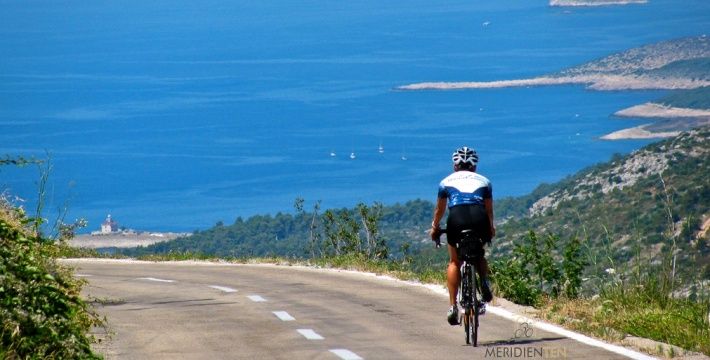
More agencies are now offering active tours on Dalmatia's islands, and better organisation has allowed cycling and island-hopping to become a reality. The islands of Brac, Hvar and Korcula, in particular, are popular destinations.
Hvar Life, an agency which is related to the original Hvar Adventure, has breathed life into the island's cycling story, and a number of initiatives with leading hotel group, Suncani Hvar, has led to the profile of cycling on Hvar going international.
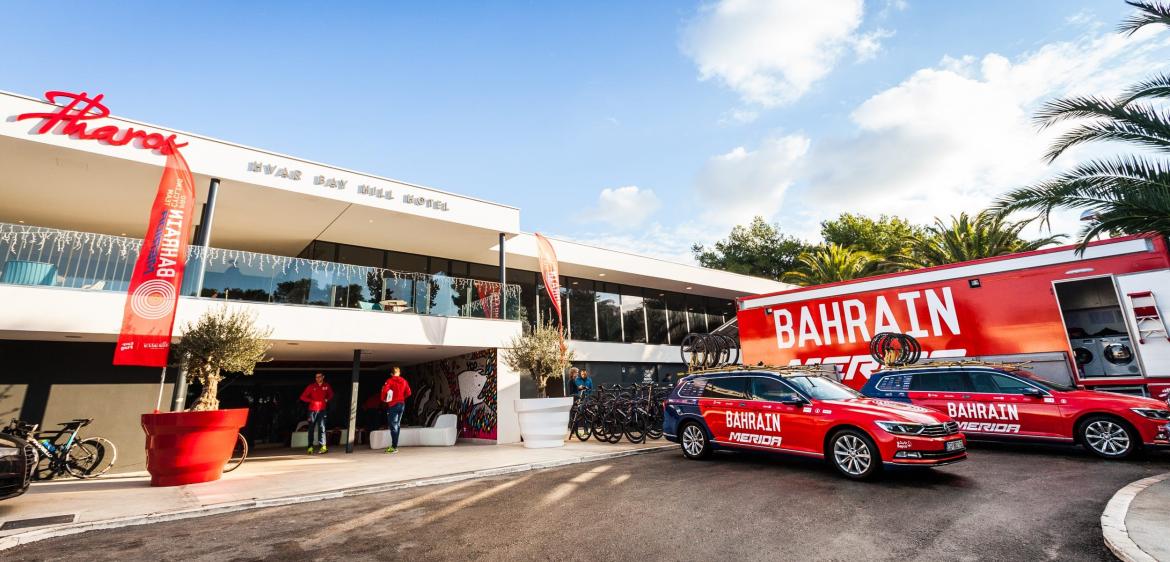
The best example of this was in December 2017, when Bahrain Merida, one of the world's top cycling teams, descended on Hvar for 10 days for their winter training. The complete Bahrain Merida team, some 75 strong - stayed at the Suncani Hvar Pharos, hvar bayhill hotel, the first cycling hotel on the island.
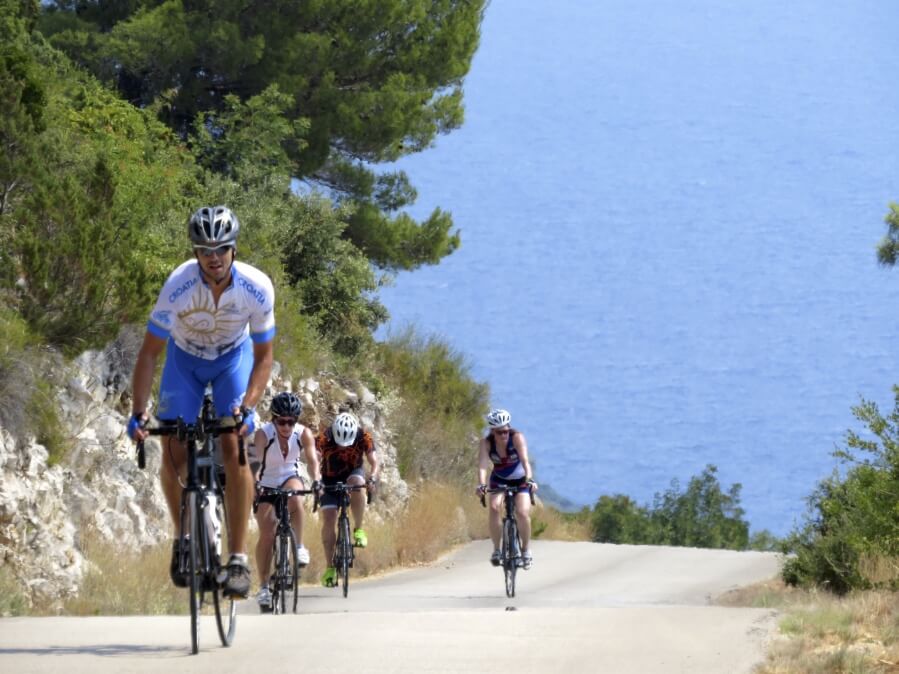
Included in the team was World Champion Vincenzo Nibali, who was very complimentary about the riding conditions and challenges on Hvar.
The Bahrain Merida visit was a great success all round, and the team returned to Hvar last month for a repeat. A great promotion for the Hvar cycling story.
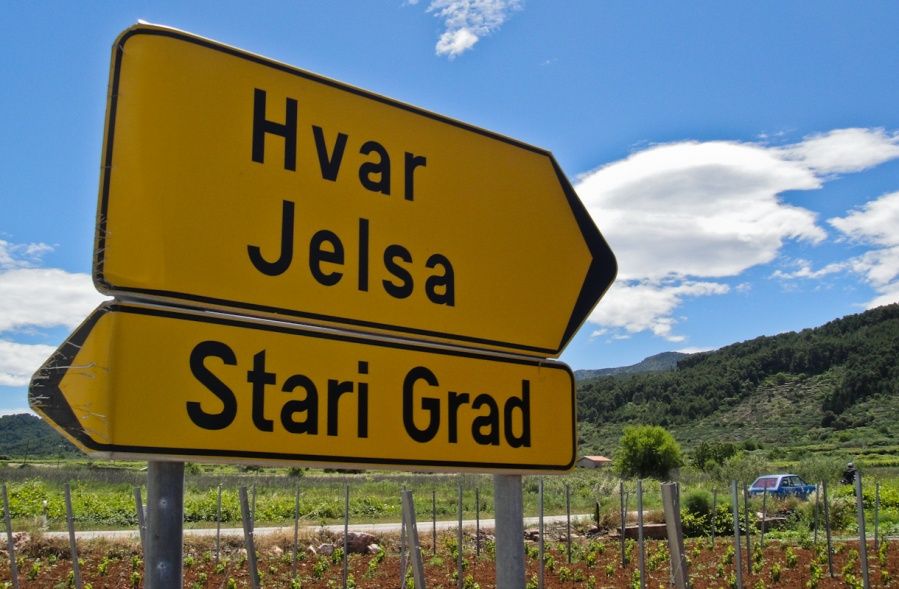
Meanwhile, as part of the 150-year celebrations of the oldest organised tourism in Europe, a special cycle ride was organised, which started in Greece. A group of island riding enthusiasts cycled from the island of Paros all the way to the Stari Grad Plain, the UNESCO World Heritage Site that was first cultivated by the Greeks from Paros some 2,400 years ago. The fields of this fertile plain are today filled with vineyards and olive groves and cultivated much the same way as they were all those years ago. It is a very popular cycling route, connecting Stari Grad with Jelsa and Vrboska, and there is even a cycling race - Cycling Through Heritage - held every year.
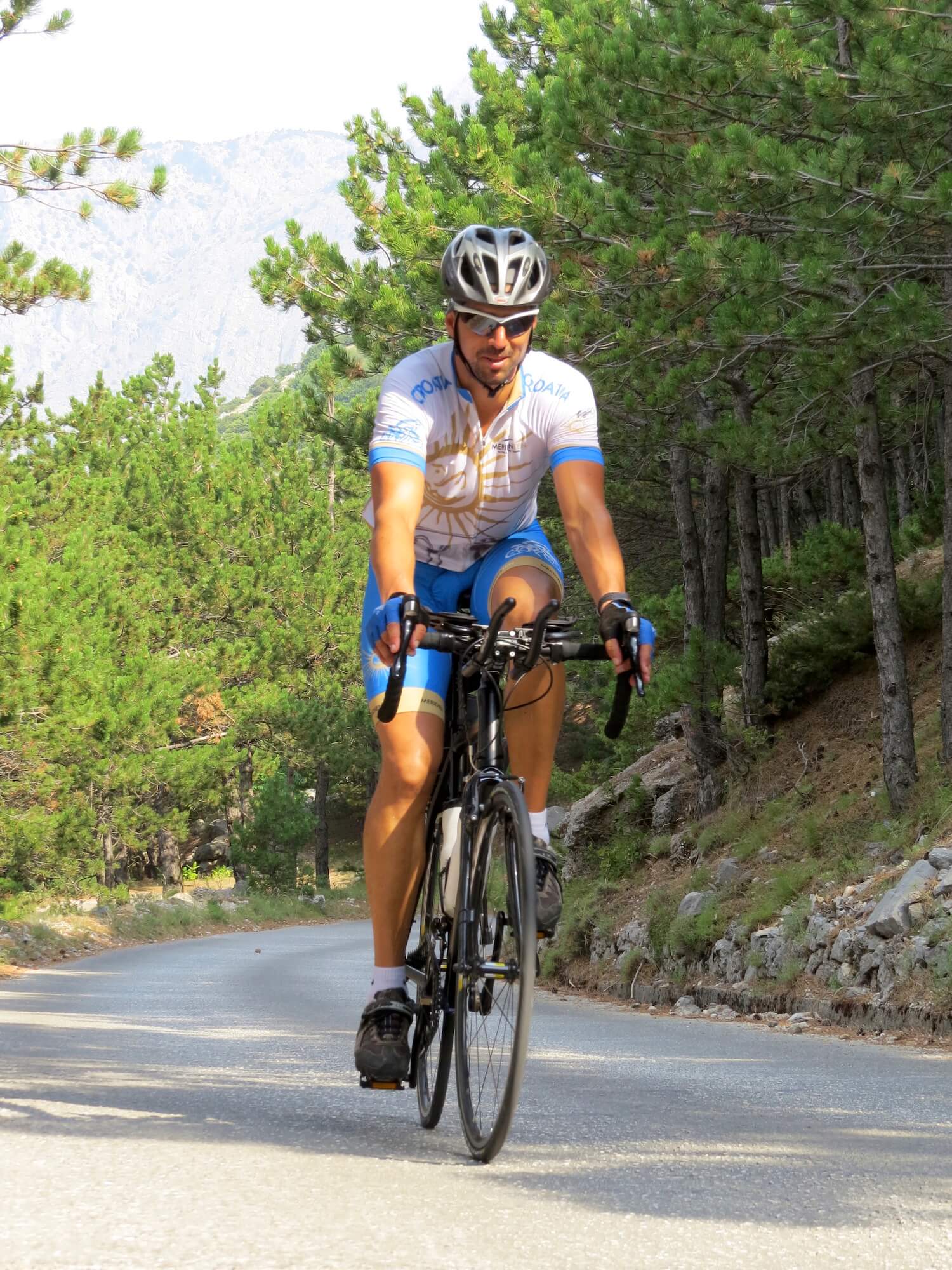
The good news is that you don't have to be a world champion to cycle on Hvar, but if you do want to get into training and improve, Suncani Hvar Hotels have teamed up with both Hvar Life and Meridien Ten, two great cycling agencies, to bring 4 cycling training camps to Hvar, which will be run by nutritional adviser and top cycling and triathlete, Miro Bebic, above.
Mijo was born in Split in 1978. In his childhood he was active in rowing and was actually in the rowing champion team of Croatia couple of times. He graduated from Maritime High School in Split and began his maritime nautical studies at Maritime University to become a nautical officer, but although he truly likes and enjoys the sea, he never went to work on the big ships, because his interests and dedication to sport led him to some different shores. And so his ”cruises” continued, still keeping him constantly on the move – swimming, biking, running – and dedicating himself to triathlon, firstly just on a recreational basis which later led to competing in national and international races. He is also a licensed spinning instructor, personal trainer, group trainings leader and nutrition adviser. When not training or working, Mijo really enjoys playing Picigin – a traditional game played exclusively on sandy Bačvice beach in Split (The goal of this game is to impress the watchers by keeping the ball dry while doing crazy stunts in shallow water. The Picigin World Championship takes part each year in June, so if you are lucky to be here, you might see him at his best).Mijo’s philosophy is - Give everything you have, take just what you need!
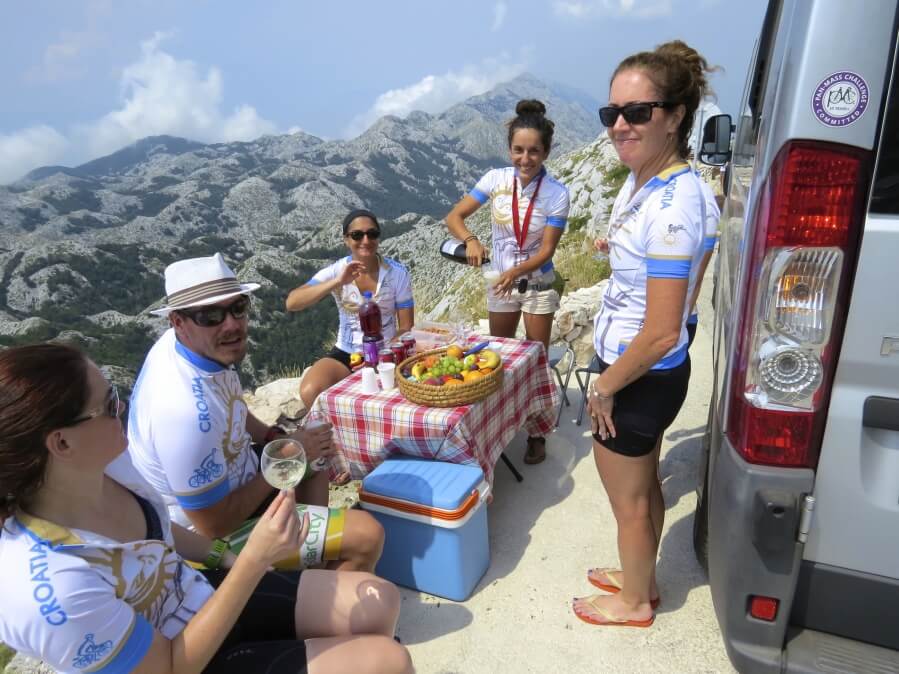
The cycling camps will be held in the shoulder months, when the temeperatures are cooler and the roads less busy. Suncani Hvar will be hosting Hvar Life groups at Hotel Amfora and Meridien Ten at Hotel Adriana on the following dates:
31/03-05/04 – Meridien Ten
21/04 - 28/04 – Hvar Life
20/10-25/10 – Meridien Ten
27/10 - 03/11 – Hvar Life
You can get a flavour of what the bike camp will be like here.
Looking to learn more about Hvar or cycling? Visit the new Total Croatia website for an introduction to cycling in Croatia and Hvar in a Page.
TransDinara MTB Marathon Race Presented in Trilj
Over 15 Million Viewers will Follow this Year’s Tour of Croatia
Official video of this year’s race released.


